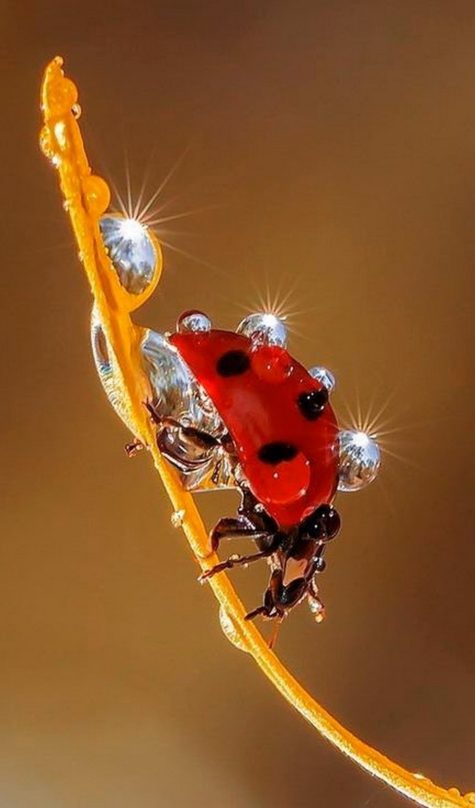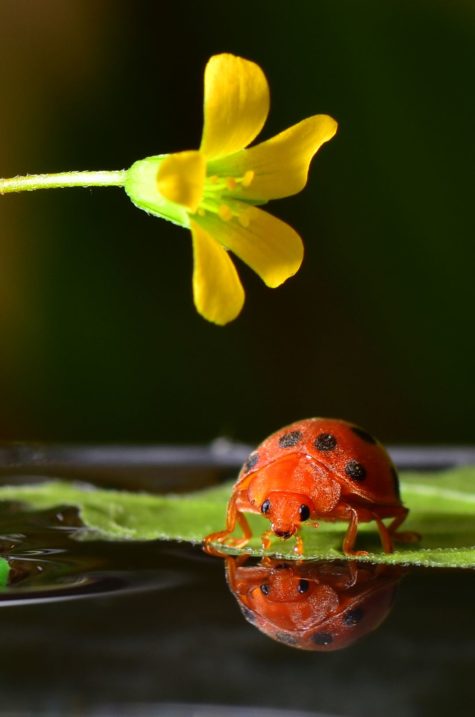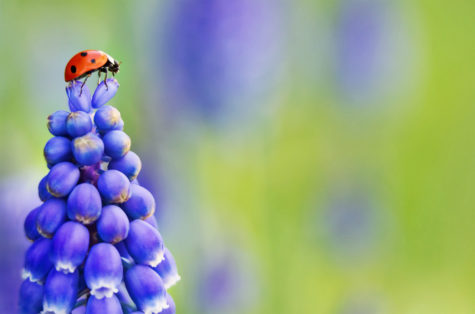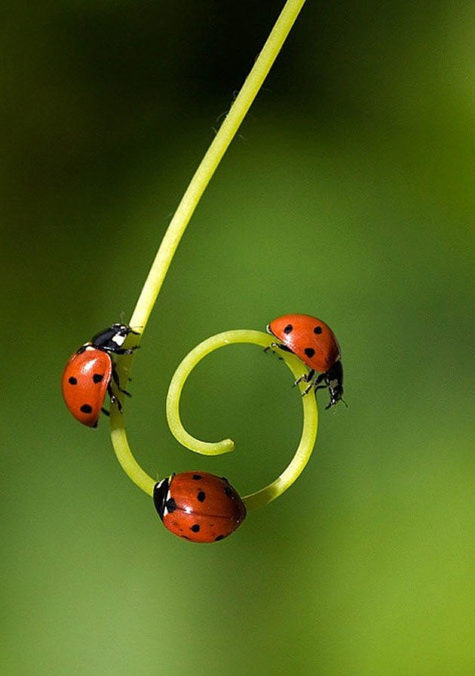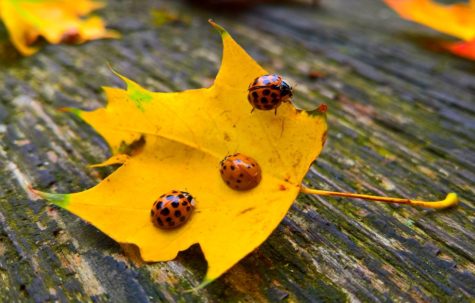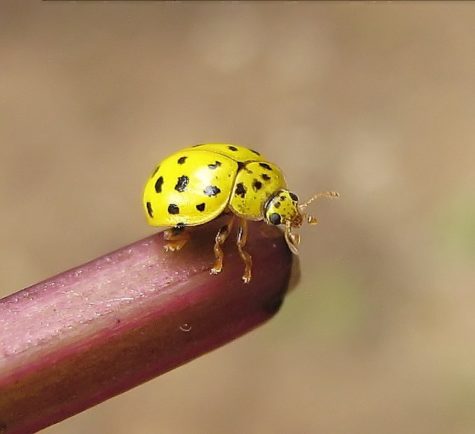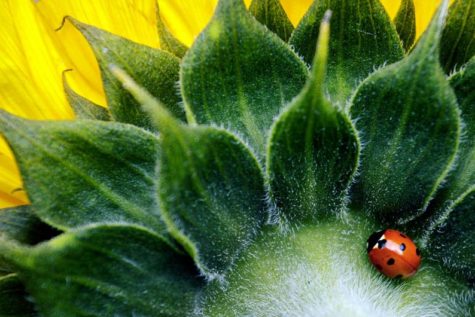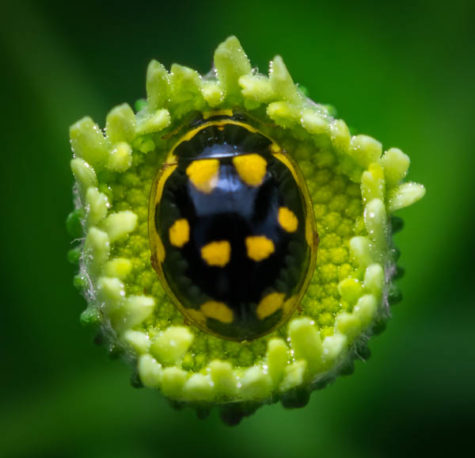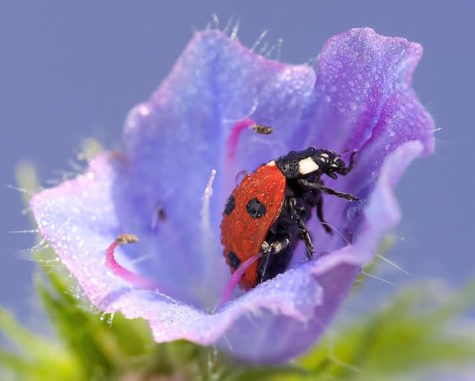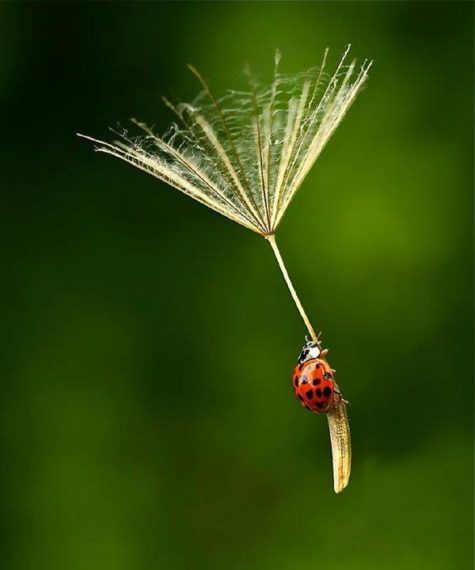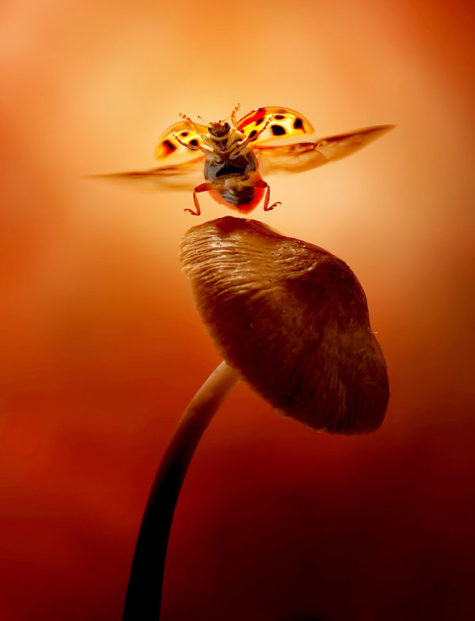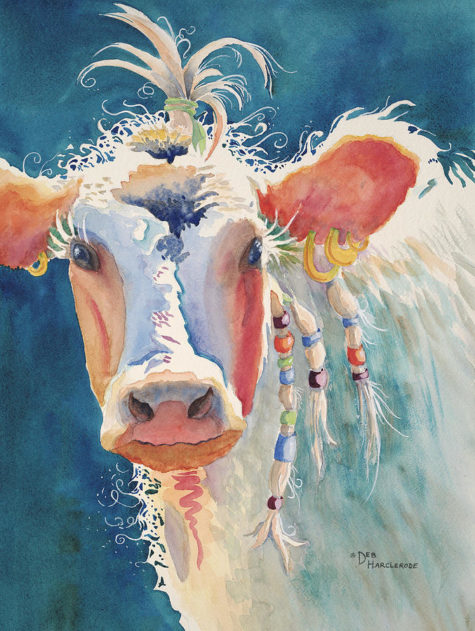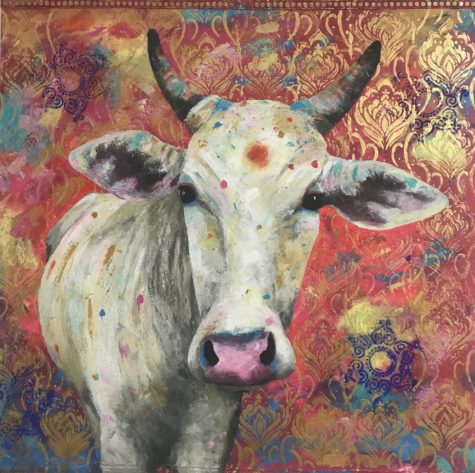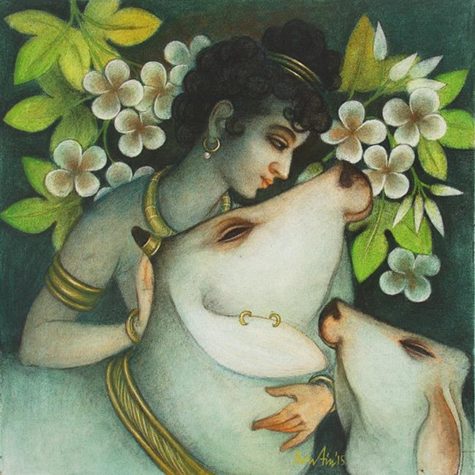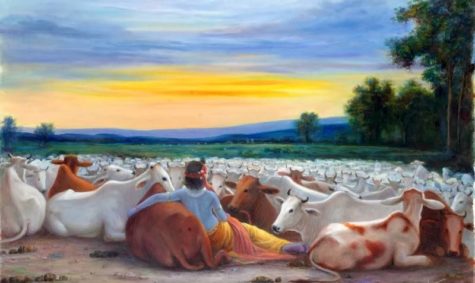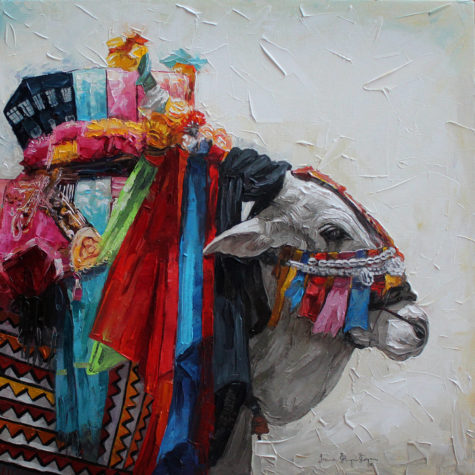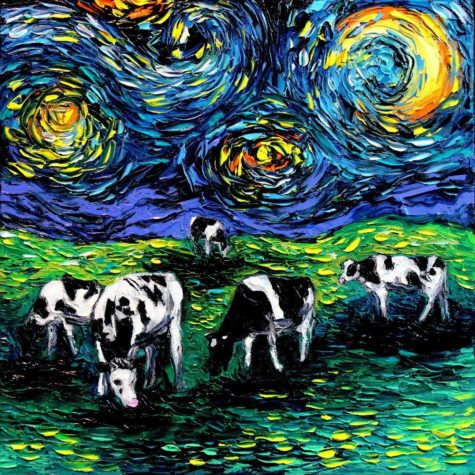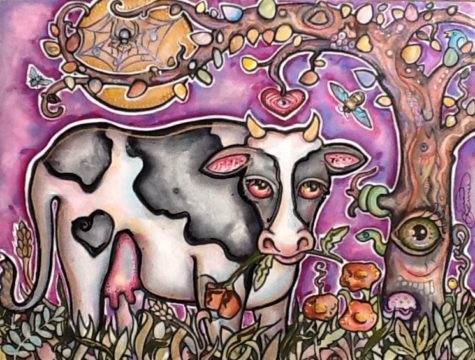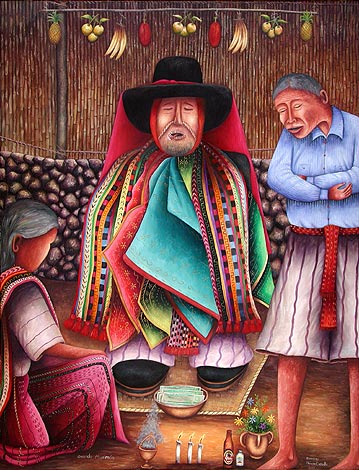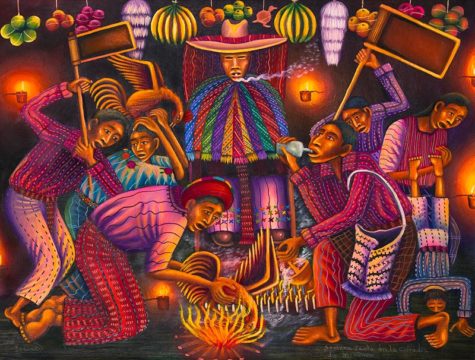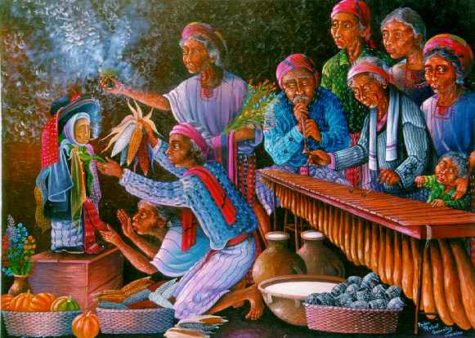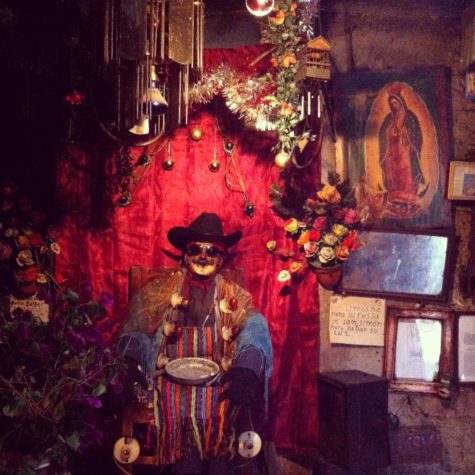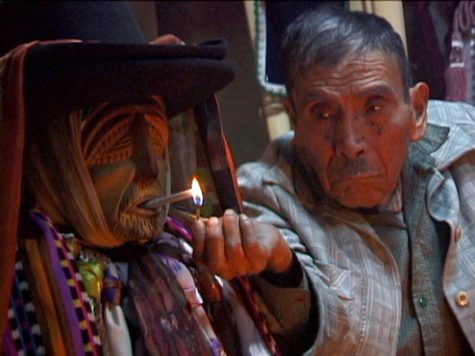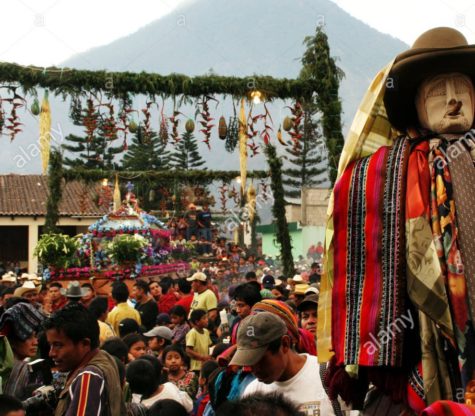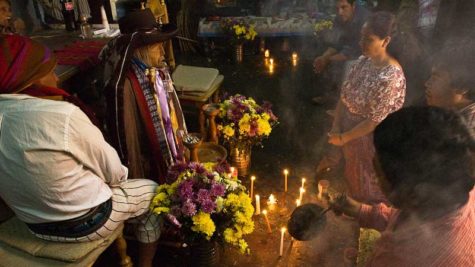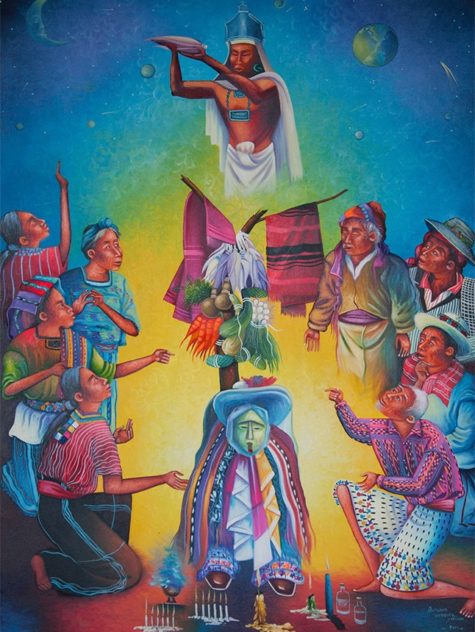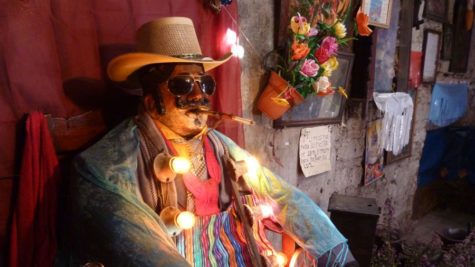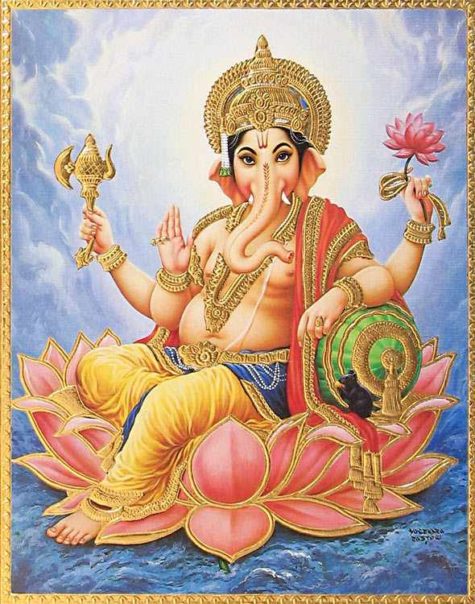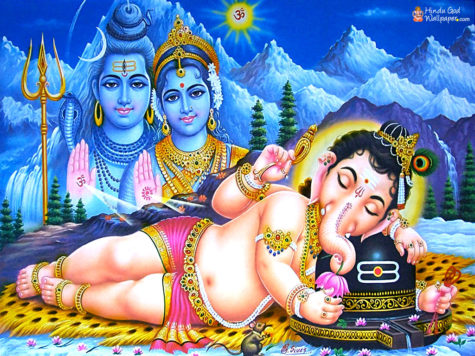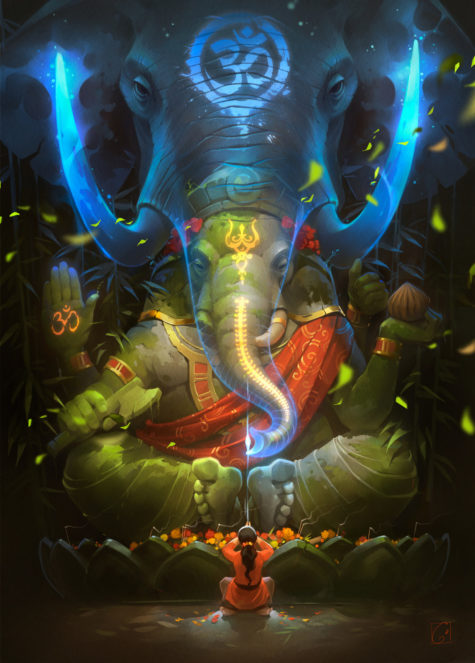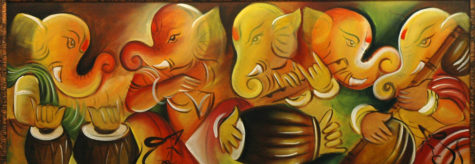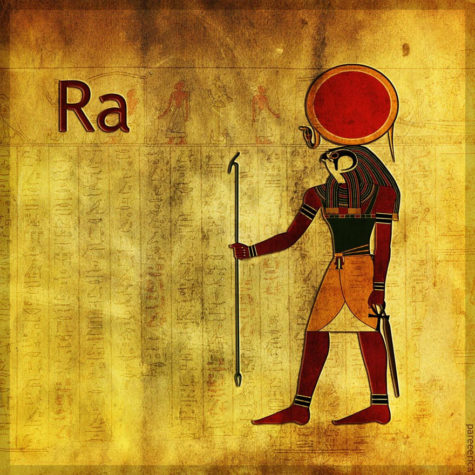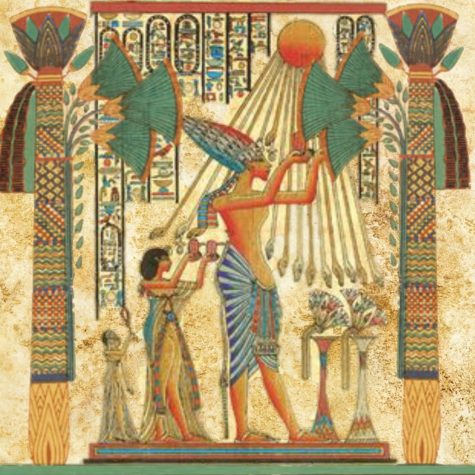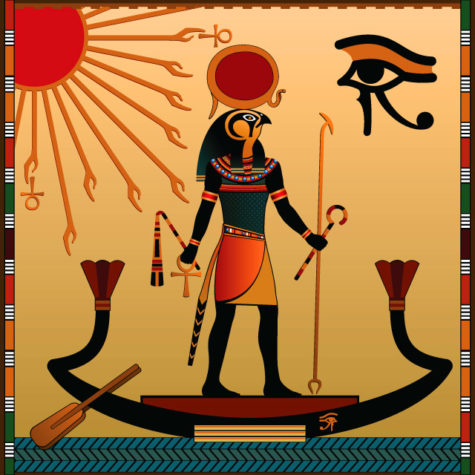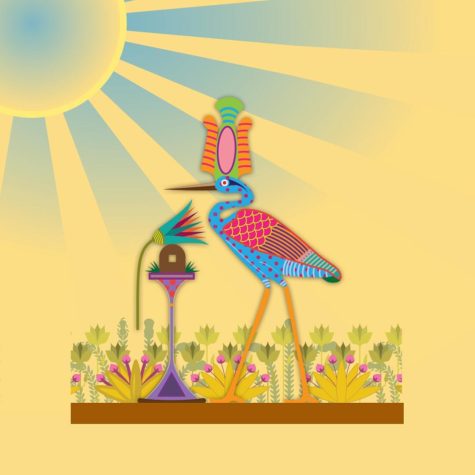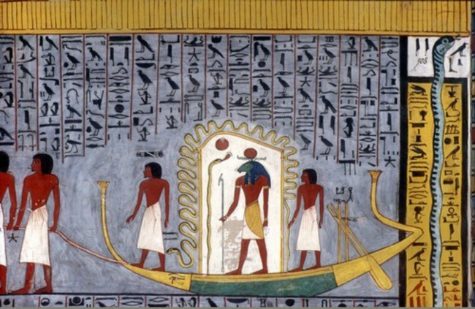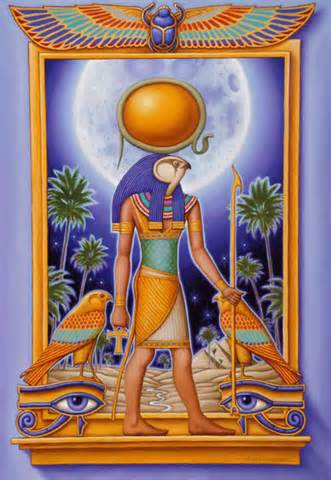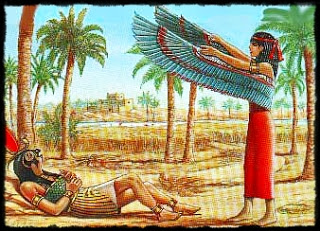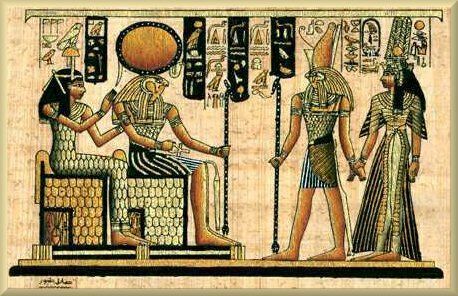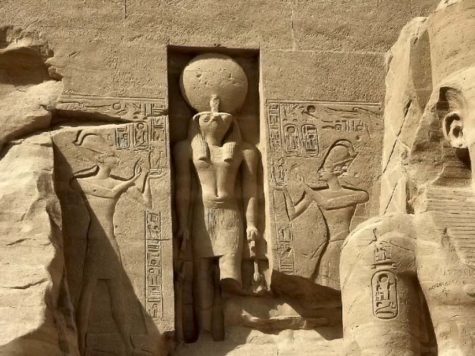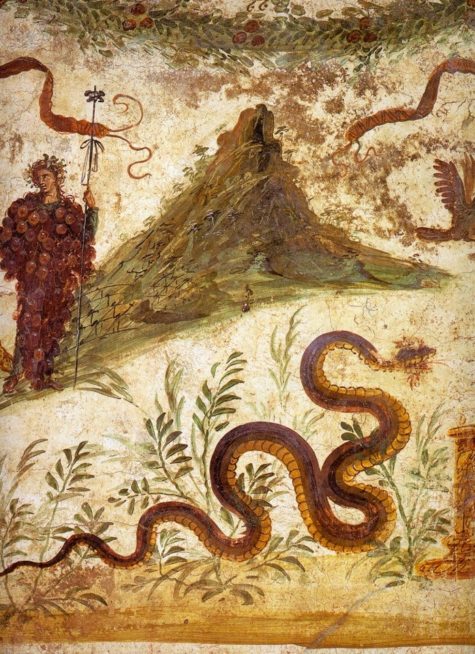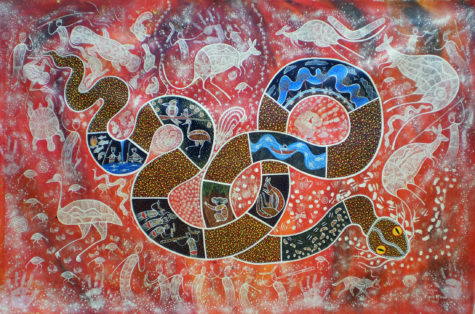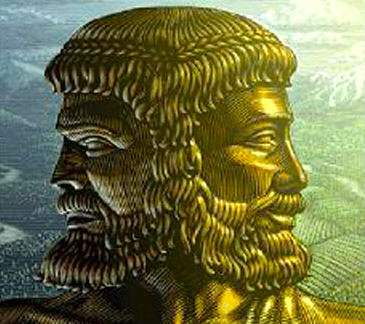Prosperity
- Also called: Ladybirds, Ladycrows, Goldie Bird
- Symbolism: A ladybug is believed to be an embodiment of Lady Luck, bringing good fortune and prosperity along with it. As the insect leads a vibrant and colorful life, it influences you to experience the joys of living to the fullest.
- Associations: Abundance, Astral Projection, Balance, Color, Enlightenment, Faith, Forgiving, Joy, Knowledge, Luck, Passive Aggression, Past Lives, Play, Protection, Rebirth, Trust, Wishes Fulfilled
The bright scarlet ladybug is generally thought to be a luck-bringer, probably because it is traditionally associated by its color with fire. It is a sign of good fortune if one lights on a person’s hand or clothing. It must, however, be allowed to fly away of its own accord, and must not be brushed off.
They hold a great deal of folklore and are considered to be good luck in nearly every, if not all, places. Holding this little beetle in the palm of your hand and letting it rest is considered a great kindness. In exchange the Ladybug will grant you a wish. When the beetle flies off , the wish is released to be fulfilled by the blessings of Mother Nature.
Don’t push too hard! Your wish will be fulfilled if you allow it to come to you.
-Ladybug
Female Ladybugs typically have 7 spots on their back. Where the number of spots on males can vary. It’s important to count the number of spots as this is the number of gifts or wishes that can come your way from the Ladybug’s energy.
When Ladybugs are present they indicate that a time of luck is at hand. If you have been preparing for a dream come true, you will be able to seize the moment and bring good luck to your path. If you have been ignoring your inner voice and not preparing to bring your dreams to fruition, then you will the lucky opportunities when they arise. Because of this, Ladybugs remind us to ready ourselves and work toward our dreams as if they have already presented themselves.
Of course, killing a Ladybug brings about extreme bad luck. So be cautious when these little helpers are around. If you find one and don’t have time to wait for it to fly off, help it out by placing it in a shrubbery of flowers. Roses are often the best places to find Ladybugs as they eat the aphids that can kill plants and crops. A single Ladybug can eat 50 to 100 aphids in a single day. Because of the control the population of what we would call the bad insects, they remind us to be helpful in our own communities. Helping where we’re needed, even if it’s just in your own backyard with family and friends. Listen, show compassion and kindness and you’ll help express Ladybug energy in your little universe as well.
It is exceedingly unlucky to kill a ladybug. In East Anglia, if one is accidentally killed, it is carefully buried, and the grave is stamped on three times, while the usual “house on fire” rhyme is recited.
What are ladybugs?
The Ladybird is known as Coccinella magnifica. The Coccinellidae are a family of small beetles, ranging from 0.8 to 18 mm (0.0315 to 0.708 inches). They are commonly yellow, orange, or scarlet with small black spots on their wing covers, with black legs, heads and antennae. Such color patterns vary greatly, however; for example, a minority of species, such as Vibidia duodecimguttata, a twelve-spotted species, have whitish spots on a brown background. Coccinellids are found worldwide, with over 5,000 species described, more than 450 native to North America alone.
A nice little infographic detailing the various colors and types of ladybugs can be found here: Know Your Ladybirds
Ladybugs are typically born in the spring and live from 9 to 18th months. They congregate when the cooler temperatures come about for hibernation. When females lay their eggs in spring, they can drop up to 800 and of those only about 50% will survive to hatching. Primarily because their eggs are an important food source for other insects.
If a ladybug has flown into your life:
When the Ladybug arrives in your life, they can signal a period of happiness is present. Some lore suggests the time period spans a number of days indicated by the number of spots on the visiting beetle. Other stories suggestion the time period equals the number of months that particular beetle has left in its cycle of life. Of course that’s hard to nail down if you’re to let the beetle fly away with your wishes.
This insect also cautions not to try to hard or go to fast to fulfill our dreams. Let things flow at their natural pace. In the due course of time, our wishes will all come true. Alternatively she could be signalling that you can leave your worries behind and that new happiness is on its way.
The appearance of the Ladybug signals new happiness, often with material gains. A renewed sense of well-being occurs, and higher goals and new heights can be more easily attained over the following months. Worries will begin to dissipate as well.
If it alights on you, make a wish and your wish will be granted. Structure a time each day where you can pray or meditate in silence and solitude. Something you thought was lost will be making its way back into your life. Mother Mary is with you to guide you and console you, no matter what your religious or spiritual orientation. You’re shielded and protected from irritations, pestering thoughts, or annoying behaviors from others.
The appearance of a Ladybug heralds a time of luck especially if it alights on you. Make a wish and your wish will be granted. Higher goals and new heights are now possible. Structure time in the day for meditation, silence or solitude. You’re shielded and protected from irritations, pestering thoughts, or annoying behaviors from others.
They can also signify caution is warranted too. Ladybugs secrete a poison from their knees when predators try to eat them. The foul tastes encourages the predator to spit out the ladybug which quickly flies away to safety. If your encounter deals with this type of situation, the Ladybug could be trying to tell you that someone or something is preventing your wish from manifesting. You may need to take a look around you and find out who’s trying undermine your efforts and give out your own strong clear warning for them to back off and stop it.
There is one breed of Ladybug that flaps it’s wings faster than a hummingbird. This beetle reminds us not to push too hard and allow the energy of magick to manifest in its right time and place. Allow your dreams to be fulfilled when you’re for them to come, and not before when you may not be ready for the opportunities.
This species of beetle signals you to to not be scared to live your own truth. Protect your truth and know that it is yours to honor.
Ladybug omens and signs:
- Their spots are generally believed to stand for human prosperity, where darker the color of the spots, the greater is one’s fortune.
- In Sussex, it is said that the person on whom the insect alights will have as many happy months as there are spots.
- For newly-weds, the spots refer to the number of children you are going to have. This also explains its Italian name “commaruccia,” meaning “little midwives” in English, as they bless you with children.
- In Dorset, the same spots fortold the price of wheat, each one representing a shilling on the bushel.
- A ladybug without spots does not signify anything out of the way. The same goes for the different colors of orange, yellow, and pink the insect is found in.
- Seeing a Ladybug in your house signifies the boon of good luck that you will be showered with.
- If a Ladybug lands on you it essentially brings good luck.
- If you make a wish the moment a ladybug sits on your hand, your wish will come true, but you would have to wait the same number of months or years as the number of its spots.
- If a ladybug flies away immediately after sitting on your hand, the following Sunday is going to be sunny and cheerful.
- If it lands on your clothes, you will get new clothes soon.
- When a person kills a ladybug, he will face death the very next day.
- Seeing a dead ladybug, however, does not symbolize anything.
Seasonal Ladybugs:
When you see Ladybugs in the fall, it’s a reminder to get ready for Winter. Depending on your region you may find Ladybugs coming into your home to find a nice warm place to hibernate during the cold months. Invite them in and allow them to stay, they’ll bring luck to your home through the season.
In the spring they bring hopes of love and energy of partnerships and unions. They can signal a good time to start a new project or union with your true love. They can even signal that your true love is near and you should be ready for their arrival. Pay a little more attention to how you present yourself and be at your best behavior.When ever or where ever you find a Ladybug in your life, welcome the luck and be watchful for opportunities to arise.
Ladybugs and their colors:
Ladybugs come in a variety of colors which can also provide an insight to the energy they bring. From a Ladybug perspective:
- Red is often a color of passion and often associated with life or matters of the heart.
- Yellow is associated with success and creative inspiration. They bring wisdom and knowledge.
- Orange can be a combination of these two main colors and indicates ambition, pride and self-sufficiency.
- Brown ladybugs can indicate confusion or discouragement. They remind us to always hold hope within ourselves and ground our actions in physical activities.
The deeper the ladybug’s color, the better luck it brings.
Call on the ladybug when:
- You’re being called upon to increase your spiritual or devotional practices.
- You want to release your fears and anxieties and return to feeling trusting and happy.
- You’ve felt disillusioned, and you want to find your faith and joy again.
- You’ve planted your garden and want to keep pests to a minimum or eliminate them altogether.
- You feel the need to live and appreciate the present.
- You want more joy in your life and want to foster a greater sense of family unity.
Many believe when newborn babies possess something related to ladybugs, like a ladybug-printed toy or clothes, it ensures their safe-keeping while auspiciously blessing them.
The ladybug is considered a good luck charm all around the world. Ladybug charms are worn to attract wealth and success and are also sometimes used as a fertility amulet.
If the ladybug is your power animal:
You’re family oriented and traditional in values and morals. You have a very delicate, loving, and inoffensive quality to your being. You have a natural flow of abundance and never worry about where the next meal is coming from—or anything else for that matter. You approach the world with innocence and guilelessness, as you have a variety of ways to protect yourself both physically and spiritually. You delve into mysteries of the universe, inquisitive about nature, and are highly spiritual. You are also open minded, trusting, happy, and bring joy to those around you.
When Ladybug is your personal animal totem you are most likely a very lively and interesting companion. You are constantly delving into the mysteries of the Universe and the unknown. You are also naturally highly spiritual and inquisitive by nature, and certainly not satisfied with mundane explanations or boring companions. For the most part you are open minded and enjoy having your consciousness expanded.
Having a ladybug as your totem animal means you see the world with child-like wonder, and believe in magic, even if just a little. Like the colorful insect, you have high spirits, bringing everything around you to life with your presence. Having an inquisitive nature, you are never satisfied with the mundaneness of daily life and are always in search of something extraordinary, even in the most ordinary things.
Trusting, open-minded, and easy-going, you are generally liked by those around you, children and grown-ups alike. You know that the secret to a happy life is finding joy in all the small things, and learning to be happy with yourself, regardless of your surroundings. You are naturally self-content, and your words can work like magic on people around you when they are worried or scared.
If a ladybug comes into your Dreams;
To dream of a ladybug is a sign that you are likely to experience a run of good luck in the near future. To dream of many ladybugs can point to feeling as though things are somewhat out of control, as though a lot of small things are going wrong. Consider ways in which you can take one step at a time to feel more in control of your life and your work. To see a ladybug in your dream can also symbolizes beauty.
Seeing a ladybug in your dream suggests you are to receive good news from someone you least expect. Generally, it means something bright and auspicious, with specific dreams often being associated with specific meanings:
- A flying ladybug refers to prosperity in both work and love.
- A ladybug falling on the ground means your current projects may be delayed.
- A ladybug slowly crawling on your head may indicate a financial crisis.
- A ladybug in your garden imbibes a moral lesson – the need to express your true emotions in life.
- A giant ladybug may indicate plenty of options for you in your ongoing project.
The dream may also be a metaphor for a lady who is bugging you in your waking life. Perhaps there is an issue that you need to address with this lady. If this insect is unusually big, then it is analogous to the magnitude of the problem. The dream may also be a metaphor for a lady who is bugging you in your waking life. Perhaps there is an issue that you need to address with this lady.
The Religious Significance:
In pre-Christian times, a ladybug symbolized a number of divinities that were slowly assimilated and given new content by Christian faith. One such is the story of two farmers in the Middle Ages. Being distressed over the widespread destruction of their crops by aphids, when they prayed to Virgin Mary to provide them relief, she responded by sending thousands of ladybugs to kill the aphids, thereby saving their crop. Since then the name “ladybug”, referring to “beetle of our lady”, has come into being.
The ladybug is considered the bringer of gifts, bringing oil to Jesus, wine to Mary, and bread to God, the Father. It also brings life and positivity to humans, thus earning it the name ‘golden bird’ or ‘goldie bird’ in some parts of England.
Since it symbolizes the human soul, and lives under the protection of Virgin Mary (‘anima della Madona’ or soul of Our Lady), killing a ladybug is believed to put one in her bad book for nine days.
The Ladybird Rhyme:
While it is considered to be very bad luck to brush a ladybug off, it is permissible to speed it onwards by a gentle puff, and the recitation of the rhyme which runs:
Ladybird, ladybird, fly away home,
Your house is on fire and your children are gone.
A variant of this couplet substitutes “your true love” for the children, and this may perhaps be the older version. The house on fire has puzzled researchers, as people said this to witches when attempting to get rid of them. In Germany it is thought the song was originally a charm to help the sun pass through the dangers on sunset, and that the house on fire symbolized the red evening sky.
It is possibly connected with a story that after prayers for help Our Lady brought Ladybird beetle to destroy a plague of plant-destroying pests. According to other lore, farmers recite the rhyme to save the insects who do them this service before setting fire to stubble fields.
My favorite variation is this one, written early in the 19th century:
Lady-bird, Lady-bird, fly away home,
The field mouse is gone to her nest,
The daisies have shut up their sleepy red eyes
And the birds and the bees are at rest
Other rhymes are sometimes recited. One in Northumberland seems to connect the insect with the weather. Children in that country pick it up as soon as they see it and throw it high in the air, saying:
Reed, reed rodger, fly away,
And make the morn a sunny day.
Young girls anxious to know where a future lover dwells, or if they will be married soon, gently blow the ladybug off the hand, or toss it into the air, with the words:
Fly away east, fly away west,
Show me where lives the one I love best.
Or:
Bishop, Bishop Barnabee,
Tell me when my wedding be;
If it be tomorrow day,
Take your wings and fly away.
Sources:
- Springwolf Reflections
- The Astrology Web
- The Encyclopedia of Superstitions
- Spirit Animals
- The Pagan Calendar
Because of its milk that is a staple food for many human beings, the Cow is arguably one of the most useful animals in the world. It was one of the first animals domesticated by humans, and its symbolic importance is rich. It is emblematic of fertility, abundance, wealth, the universal Mother, and of rebirth. The Cow is also a gentle and compliant creature.
In Vedic literature the Cow is also a symbol of abundance and fertility as it represents both earth and sky. To Hindus and Buddhists, symbolism of the Cow deals with patience and holiness.It is considered India’s most sacred animal. The calm, tender nature of the Cow wins this right among the Buddhists.
The Cow as a sacred animal is a fundamental part of Hindu iconography. In India the Cow is so revered, and treated so gently, that it often causes a traffic hazard as it ambles along busy city roads. There are several reasons for the sacred status given to the creature. Not only does the Hindu faith have respect for all animals (vegetarianism is a tenet of the faith), but the God Krishna was a cowherd for a time, and one of his names is Bala Gopala, “the child who protects the cows.”
Hindu deities rule over each and every part of the Cow. During times of famine, the Cow is far more useful as a creature that can produce limitless amounts of milk, then as a dead beast that would provide meat for a limited period only.
In Egypt the Cow was personified as Ahet, the mother of the Sun itself. To make themselves fertile Egyptian women wore amulets of the Goddess Hathor, with the head of a Cow, in her guise as the Creator.
In Norse mythology the Cow makes an appearance as Audhumla, the mother-ancestor of all living things, whose utters emitted the four rivers of power – these provided nourishment for the giants (primarily the first giant, Ymir) that ruled the First World.
In Celtic mythology the Cow is sacred to the Mother Goddess Brigit who also governs the Earth, mothers, children, health, nurturing, providence, and the full range of the Female element of the universe. This symbolism remains consistent with that of many other cultural settings and supports Cow as representing life’s fragile beginnings and the necessity to safeguard and restore those who have no voice or support.
In Greek myth, one of the names for the great Cow was Europa, which means “full Moon.” The stars were said to be the children of Europa.
In Lancashire folk-speech, the name “cow’s lane” was sometimes given to the Milky Way, the traditional path of souls, as it was also in some parts of Germany. This may be connected with the old north European belief that whoever gave a cow to the poor during his life would be guided by that cow along the perilous soul-road after his death, and so would be sure of reaching Heaven in safety.
Once, there was a custom whereby the cow was brought to the sickroom, and in what must have been a distressing and rather frightening ritual, the dying person was encouraged to grasp the tail of the cow as he breathed a last breath.
This psychopomp aspect of the Cow is still celebrated in the Nepali festival called the Gai Jatra or Cow Festival. In a boisterous celebration, every family that has lost a member during the course of the year has to take part in a procession, leading a Cow, or if no animal is available, then a child dressed in a cow costume is considered to be a fair substitute. The Cow is believed to guide the soul on its final journey, including a voyage through the Milky Way, the constellations of stars said to be the milk splashed by the great Cow that was the mother of the Universe.
Red cows appear in some pagan creeds as personifications of the dawn, or clouds, or lightning. It is possible that they had some special significance for the ancient Hebrews also, since it is definitely stated in Numbers 19:1 that the victim offered for the purification of the people must be “a red heifer without spot, wherein is no blemish, and upon which never came yoke.”
In England the milk of a red cow was formerly supposed to be superior to any other, and to have healing properties. Such milk is often specifically mentioned in 17th and 18th century medical books as an essential part of remedies for various ills, particularly for consumption and chest ailments. Red is, of course, a life-giving color in mythology and folk tradition alike because it is associated with fire and with blood, and red objects of various kinds figure constantly in healing charms and folk remedies.
According to a French legend, Cows always have a sweet breath because when Our Lord was born in the stable at Bethlehem, a Cow, seeing Him shivering in the cold, warmed Him with her breath and drew the hay over Him with her lips. As a reward for this act of kindness, she was promised that her breath, and that of all her descendants, should ever afterwards be sweet, and in addition, she was given the privilege of carrying her calf for nine months, like a Christian woman with a soul to be saved.
Cow Symbolism
The Cow is a lunar symbol, aligning itself with feminine (yin) qualities among the Chinese yin-yang energies. A quick-list of Animal symbolism of the Cow would include:
- Patience
- Nourishment
- Abundance
- Fertility
- Female Power
- Potential
- Possibility
- Calming
- Grounded
- Provision
- Beginnings
Because you’re seeking out Cow symbolism and meaning, a deep stirring must be happening in your soul. Cows represent motherhood, Mother Gaia, and the Mother Goddesses. Take time to meditate on all Mother Cow has to offer. She is a sacred reminder of fertility, birth, and nurturing.
- When Cow appears as your Spirit Animal trust that the mighty storm will pass and you’ll be OK.
- Cow as a Totem Animal belongs to those with profound Mother Goddess instincts.
- Call in Cow as your Power Animal when your soul needs TLC.
The Cow Totem
Those who know Cow as their Totem Animal supply a sense of stability and solid, loving, growth-oriented relationships with self, others and the environment.
Cow people have the ultimate “mother’s intuition.” They can feel when others are out of sorts – when their auras are “scratchy” – and they always seem to know just what to say or do to help. Somehow, folks heal more quickly when in the company of Cow Totem Animal people.
If Cow is your Totem Animal, always remember that one cannot feed others from an empty trough. Though you were born with the natural instinct to take care of the world, YOU are part of it. Your needs are just as important as everyone else’s. A wise Cow mama know when to take a break and nourish her own mind, body, and spirit.
We should always work to have a positive and happy home environment. If we don’t, we should inquire deep within as to how we can change that. Calling upon the Cow animal totem, we can learn how to make basic changes that are needed to balance the joys in our surroundings.
Like its family member the bull, the Cow totem is highly connected to nature, the Earth, and its continuation through reproduction. Cows are very generous with their lives and behave in the most selfless of manners.
Among fertility and femininity, these mother creatures represent the virtuous traits of sustenance, abundance, potential, calming, grounding, and provision. They also serve as an uplifting sign of female power and prestige, since they are, after all, crucial to the continuation of any species.
New beginnings are also a theme associated with Cows in conjunction with their maternal auras. Through their pregnancy, birth, nourishment to their offspring, and ultimate bodily gifts, Cows show the entire life cycle in its bittersweet beauty from start to finish.
The female Cow totem is linked to its male counterpart, the bull, through the symbolism of fertility and reproduction. While the male totem exemplifies nourishment through its slaughter or sacrifice, a Cow symbolizes birth and motherhood.
Cow symbolism assists us in understanding and embracing fertility and the relationships necessary for it. It is a soft and nurturing creature that arouses the soft side in each of us. The two animals are directly connected, as they are both needed to create new life.
These animals illustrate both the masculine and feminine qualities that exist in every being. The bull is characterized by bold and rigid energies, while the Cow is far more gentle and tranquil. They remind us to constantly ensure that these energies are in harmonious balance.
Cows As Spirit Guides
The Cow is a very powerful Spirit Animal. While at first you might wonder about the value of such a guide in your life, there is much about Cow to respect.
Like many other animals, Cows as spirit guides have been revered in various religions and cultures around the world. In ancient Egyptian astrology, the Cow served several symbolic purposes, including being worshiped as the goddess of joy and maternal nourisher of all things.
Additionally, they remind us to nourish ourselves physically, mentally, and emotionally. If we neglect the basics of our lives, it will be impossible for us to live happily and thrive. Every day, you should ask yourself if you are eating the right foods, drinking enough water, and exercising both your body and your mind to remain healthy and alert.
Cow reaches out to those struggling with fertility offering motherly advice. You may not always like what Cow tells you (did you like everything your mother told you?), but the heart behind the Cow Spirit Animal is truly one of giving. She always wants what is best for both you and your proverbial herd.
When weathering a storm, be it emotional or physical, turn to Cow as your animal spirit guide and think of how firm Cows stand in vile weather. There is no moving a Cow and no influencing it, but for urgent matters of hearth and heart. Nonetheless, as you stand in your place of power, remember that Cow also gives you keen perceptions. Be on the alert for possibilities or potential peril.
If your spiritual path is working toward the greatest good, Cow guidance is a fantastic helpmate. She will stay with you compassionately with watchfulness, making sure you stay inside the spiritual boundaries you’ve set.
Cows are lunar, divine feminine energy. If you’ve ever looked into a Cow’s luminous eyes it’s easy to feel how loving they truly are. But, as soft and magickal as moonlight is, never forget it is the moon which is mighty enough to influence all the waters of the earth. The divine feminine is just like that. Pliable and giving, but it should never be mistaken for weak.
Cows are a simple creature that get their joys from life’s basic pleasures. From this, they aid us aid us in remembering to be easy going and live in the moment. Often times, we ignore the innocent and plain moments that make our lives wonderful.
If we can manage to clearly assess our lives, we will be reminded to thank our family members and those close to us for all that they do to make our lives joyful. Simply appreciating your community can change your mentality greatly, having positive effects on both your outlook and your body.
One of the Cow symbol’s main spiritual messages is to never take this for granted, for eventually this life will end.
Cow As A Power Animal
If you want to have children, consider carrying a carved Cow totem and invoke Cow as your Power Animal. Cows are powerful symbols of new life. That life need not necessarily be as a parent however. It can apply to new jobs, new homes, and new relationships.
Keep a Cow totem on hand when you need protection from negativity or nightmares. Like the Mother Goddess herself, Cow energy holds you close, reassuring that nothing will harm you.
As a power animal Cow calls on you to love fully. Look at the world and the wonders of creation and let that fill you with all the characteristics you most need to embrace life.
Note, however, that this power animal will not let you give and give and give without refilling. Those that serve need service, including you. Put out a cattle call and let people give back (it blesses them too).
Dreaming About Cows
Lessons of gratitude and the appreciation of sacrifice are prevalent in cow symbolism, especially when presented in our dreams, and we would do well to integrate them into our daily life.
A cow dream symbolizes some important issues. In Hindu culture, cows are sacred and represent fertility, nourishment, and motherhood. Cows also represent personality traits such as passivity and overall contentment. Seeing a cow in a dream is usually a positive thing, with the appearance of grazing cows, in particular, representing happiness and prosperity. Some ancient societies and some tribal societies measure a person’s wealth by how many cows he or she has.
The dream cow indicates that you obey authority figures without questioning them. It may represent maternal feelings or a desire within you to be taken care of. If you see a herd of cows in your dream, it suggests that you have a strong need to belong to a group. A herd of cows may also mean that you have a group of close friends that you enjoy. If the herd was disturbed or anxious in some way, it means that something or someone may be acting on your group of friends in such a way as to cause trouble and pull the group apart.
Dreaming of a field full of Cows portends improved finances or potentially a multiple birth in the family. A Cow grazing happily speaks of joy and contentment in the home. If the Cow represents self, it’s a signal that you need nurturing and spiritual nourishment.
The appearance of a cow with the face of a skeleton in your dream means that your mother or some mother figure in your life is acting coldly toward you or not responding to your needs. If you dream of cow with a calf, this is always a positive sign.
If you dream of being a cow, this suggests that you are afraid of being stupid. Dreaming of a sick cow suggests that some plans you’ve made for the future are threatened and require some action from you to avoid problems.
Because cows often represent motherhood, they are also representative of the feminine part of a man’s psyche. If you are a man, the dream of a cow suggests that you recognize this part of yourself and incorporate it into your life in order to attain greater psychological balance overall.
Dreams of cows are symbolic of peace, passivity, endurance, mothering, and humility.
Superstitions About Cows
An old English superstition says that cows kneel down on Christmas Eve and pay homage to Jesus. They speak in human voices, but anyone who hears them will die before being able to tell anyone about it.
Old farmers say that every herd has a “master cow” which leads the others into mischief. If a cow lows after midnight, it is a death omen for someone in the neighborhood, and similarly, if a cow lows three times in a man’s face, he has not long to live.
If a cow licks the forehead of another cow, it is a sign that their owner is about to die. It is also a sign of imminent death if a cow enters your property. Three cows means three deaths. Yet another reason for keeping your gates closed, especially if you live in the country!
It is important to wash your hands thoroughly after milking a cow. If you don’t, you will receive no milk on the following day.
- Cows that eat buttercups produce tastier butter.
- When out in the field an upright Cow tail foretells rain.
A cow’s breath is believed to have health-giving properties and people suffering from tuberculosis were at one time encouraged to sleep with the cattle.
If separating a calf from its mother, you should take a calf out of the barn backwards to prevent its mother mourning the loss of her child.
In Ireland a hare appearing with Cows on Beltane signify witches who are up to no good stealing away with fresh milk. The Scots believed that putting tar behind the Cows’ ears would keep the witch from succeeding.
Witches were also believed to be able to steal the milk of cows from a distance by means of a magical tether, the strands of which were plaited the wrong way. They could do the same by going through the motions of milking with a rope, or a pot-hook, or the legs of a stool, and sometimes they came in the form of hares and sucked the udders of cows lying out in the fields. When the true milking-time came around, such bewitched animals would give only a poor supply or no milk at all.
Various charms were used to counteract these thefts, one of which was to make the rope used to tether the animals’ feet out of horsehair, and to thrust a stick of rowan, or some other magickal wood, through it.
In an article in Folk-Lore (1895), a story is told about a Bernera farmer whose cows gave so little milk that he was sure they were bewitched. He used such a rope, with excellent results; but as soon as the cows were released, they all rushed to a certain woman’s house and began tossing at the walls. This was regarded by the local people as clear proof that the woman had previously bewitched them, and so strong was the feeling against her on this account that she had to leave the district.
In Discourse on Sympathy (1658) an old country belief is recorded that if milk boiled over and fell on the fire, salt must immediately be thrown on the place where it fell. If this was not done, the cow which gave it would suffer from an ulcerated udder.
Sources:
- Animal Speak by Ted Andrews
- What Is My Spirit Animal?
- The Encyclopedia of Superstitions
- Element Encyclopedia of Secret Signs and Symbols
- What’s Your Sign
- Titles: The Old Man; The Uncle
- Also known as: Maam; Don Pedro; Saint Simon; Brother Simon; Brother Peter
- Pronounced: Mah-shee-mon
- Origin: Maya
Maximón is a master shape shifter, reconciling religious traditions and offering guidance to indigenous Mayans who venerate him in Guatemala. He is also a heavy drinker and smoker.
Maximón, also known as San Simón, is an important Mayan folk saint in Guatemala represented by a dressed up wooden effigy sitting on a chair who, unlike other saints, smokes cigars and drinks alcohol. Today Maximón is actively worshiped as part of what we could refer to as “folk Catholicism“, especially in the highlands of Guatemala.
His visitors travel from near and far to come see him and ask for protection, money, to be cured or even find a husband. Maximón receives everyone – men and women, villagers and urban dwellers, prostitutes and entrepreneurs – who come with many offerings including tobacco, liquor, money and tortillas (his favorites).
Christian missionaries who came to Guatemala to convert the local people encountered the primordial Mayan deity Maam, Lord of the Universe. Attempts to syncretize him to Saint Simon backfired. Instead of the Mayan god fading discreetly into the identity of the saint, Maximón, as he became known, took on a whole new life and personality of his own: defiant, rambunctious, anti-social. The Church then attempted to syncretize him with Judas Iscariot or even Satan, but it was too late. All they did was enhance Maximón’s outlaw image and make his devotees love and admire him even more.
Maximón’s appearance varies greatly by location. While he’s popularly depicted as a man in a suit and hat, this isn’t a constant. In Santiago Atitlán, he wears colorful garlands and scarves, while in Zunil, he wears sunglasses and a bandanna.
Although his wardrobe has been updated and modernized, Maximón is an ancient, primordial spirit. He has survived numerous attempts to suppress his veneration and is now more popular than ever, venerated throughout the Americas and Europe.
He is generally benevolent, associated with healing, prosperity, and protection. In Guatemala, Maximón is traditionally invoked for protection for or from anti-government forces. Nothing is beyond his assistance or outside his jurisdiction. Maximón is said to represent both light and dark, and to be a trickster. He is both a womanizer and a protector of couples. Be wary.
Maximón is a crossroads spirit. He mediates between the living and the dead, people and spirits. He serves as a bridge between malevolent and benevolent spirits. Maximón is an extremely responsive spirit who works for comparatively modest offerings.
He makes people’s dreams come true. He challenges believers. He heals. He helps overcome obstacles. He stands against injustice. He dances the night away. He brings wealth and success. Fertility and prosperity. He wins the heart of women and protects from infidelity. In fact, he is the lord of sexuality standing for all unresolved matters of a moral nature.
Legend says that one day he was caught sleeping with the wives of the village men who had supposedly gone to work. Furious, they cut his legs and arms off. So Maximón also makes mistakes, which makes it easier for people to relate to him. Sometimes when he brings justice to a person, it is even at the expense of another. Thus, he sits at a crossroads between being both a deity and a trickster, a friend and a fiend.
Maximón may indicate his presence via the smell of cigar smoke when no cigars are present. He visits in dreams.
Spells, Rituals and Operations:
Maximón is invoked in numerous magickal spells, rituals, and operations.
- Protection of your business
Place his image in your shop or store to stimulate better business and for luck, money, and protection. Maximón foils and/or punishes shop-lifters and thieves
- Abusive people or situations.
If someone abuses you, whisper your needs directly into the ear of Maximón’s image. Place the person’s photo under Maximón’s left foot, or write a note and place it there.
- Requests for love.
Coil a rope around his image (even around his neck!) to show him that you need his help capturing someone’s heart or alternatively, for hobbling competing suitors. Whisper in his ear to tell him what you need.
- Marital issues.
Wrap a rope around his image to keep your spouse from running off with another.
- Maximón is invoked to heal addictions.
He will accept request on behalf of others, especially addicts. He may be invoked on behalf of someone else who cannot or will not ask him themselves. It is not necessary to tell the person that you have requested Maximón’s blessings on their behalf. The deal is between you and Maximón. Make offerings and tell him what the other person needs. However, even if the other person reaps the blessings, Maximón is doing YOU the favor; YOU must fulfill any vows or promises made.
Colors and Candles
An elaborate color scheme is used to communicate with Maximón. Those who are experienced candle-burners may choose to retain their own candle color associations, but the following color chart is commonly used to communicate desires and petitions to Maximón. Burn the color candle that closest represents your needs:
- Black: Protection from envy, jealousy, enemies, and the deliberately cast Evil Eye
- Blue: For good luck, employment
- Brown: Protection from resentment and the accidentally cast Evil Eye
- Green: Business, prosperity, cash
- Light Blue: Cash, travel, education, and happiness
- Pink: Hope, health
- Red: Love, fidelity
- White: Protection of children
- Yellow: Protection for adults
Offerings:
Hats, silk scarves, flowers (he likes bougainvilleas, carnations, and gladioli), fruit, tobacco products especially cigars, copal incense, water, Coca-Cola, tequila, aguardiente. An elaborate offering when you really need a big favor or as a fulfillment of a vow is forty candles plus copal incense.
Images:
The oldest images of Maximón consisted of masks and mysterious wrapped bundles. However a modern votive image has also evolved possibly based on the only known existing photograph of shaman, wizard, and Maximón devotee Francisco Sojuel (died circa 1907), credited with crafting the first modern Maximón mask. This image depicts Maximón as a mustached man wearing a black suit and a Stetson or similar hat. He is usually, but not exclusively, depicted sitting.
The modern image closest to his ancient one consists of a bundle of fabric topped with one or more Stetson hats.
The name Maximón is often interpreted as deriving from Maam and Simon. Another theory suggests that it derives from Maam and ximon, a Mayan word that may refer to a bundle or the act of “tying up,” essentially creating a bundle. The use of bundles as sacred objects is not uncommon in indigenous American spiritual and magickal traditions.
Votive images range from pocket-size to life-size. The mouth of his statue may be open so a real cigar may be inserted.
Alternatively, the statue may be designed so that the cigar can be placed in his hand. Ashes and stubs from offerings are collected and preserved. Placed in a small charm bag they serve as amulets, allegedly bringing good luck. Sometimes tubes are inserted into statues so Maximón can actually “drink.” Liquor passing through his system is then reserved for ritual use.
Maximón often accumulates an extensive wardrobe. He is a fastidious spirit whose clothes must be kept clean. The rinse water used when hand-washing his clothes may be preserved as Holy Water, or magickally charged water. It is said to have magickal and healing powers.
Festivals and Sacred Sites:
Guatemalan festivals dedicated to Maximón coincide with Holy Week, culminating on Good Friday.
One of the aspects of Maximón is that he can appear in any form. During Easter week he takes on the form of Judas Iscariot, who in betraying Jesus became the catalyst who put into action the events ended in the crucifixion of Jesus. Judas (Maximón) then hangs himself.
What has sometimes been described as a lynching in Guatemala, is actually a Easter Week re-enactment of the crucifixion where the hanged man is Maximón in his guise as Judas Iscariot. The Tz’utuhil Maya workers on the fincas [plantations] on the coastal side of the Volcano Atitlán have brought their customs with them from the highlands in Santiago Atitlan.
Maximón is the subject of innumerable home shrines, but his major public shrine is in Lake Atitlan, Guatemala.
In Santiago Atitlán, Maximón’s effigy resides in a different household every year. His image is normally only taken out of this house during Holy Week, whereafter it will change households, but is on display year-round due the popularity of pilgrimages. The effigy of Maximón in Santiago stays with one of five families, who are members of a religious brotherhood looking after the saint. He stays there for an entire year, and is moved during the procession of Holy Week.
Maximón lives in a room within the family home, and he is accompanied by two chosen family members at all times. Yep, you read that right: at all times…for a year. The chosen two won’t work for a year; guarding Maximón and spending time with him is their full-time job for 365 days. They stay by the altar year-round, drinking and smoking alongside it.
But that’s not all. These guys are also there to pass on offerings from visitors to the effigy, which are usually in the form of cigarettes, cigars, money, tobacco, and moonshine. Visitors can then ask for good health, good crops or marriage counsel. The two guardians usually put on one of Maximón’s two cowboy hats and speak to him in a local dialect.
It looked like they were having a casual chat, the guardian resting his arm on Maximón’s shoulder in a brotherly way, stopping his speech every once in a while, as if listening for Maximón’s reply, or simply to tip the ash off his cigarette.
If you want to share a drink with Maximón, you can do that too. He likes the local ‘Quetzalteco’ and his guardians will pour it through Maximón’s mouth. Because he’s hollow, the liquid flows through him and out between his leather boots. It’s then caught in a glass and drunk by the guardians or other family members who happen to be passing through. Like some kind of spiritual keg you can tap. This means the guardians are always drunk, or at least sleeping off a big drink. All the time.
In the town of San Andrés Itzapa, there is a large temple to Maximón. Here, offerings such as corn, flowers, and candles are burned in public by Shamans for the deity. Pilgrims travel to this temple from all across Latin America.
Maximón is more than just a saint. He represents the resilience of Mayan people in the light of their struggles against oppression, a symbol of hope and transformation.
Myths and Legends:
According to some legends, Maximón was an elder who reincarnated to protect his people. During the Spanish Conquest, an elder named Ri Laj Mam, upset by the evils of the Spaniards, encouraged his people to start a rebellion. He was eventually executed, but returned to life in the form of a judge named Don Ximon, who fought to give land back to the native people of Guatemala.
Another legend states that Maximón was hired by traveling fishermen to protect the virtue of their wives. Instead, Maximón disguised himself and slept with all of them.
In Santiago Atitlán, an alternative tale says that Maximón was never a man, but a wooden figure created by Shamans to defend the village from witches. However, Maximón used trickery to harm the people of the village, so the Shamans twisted his head around and broke his legs to stop him. He then did his job properly and protected the people of the town from evil.
Sources:
Elephant-headed Ganesha may be the most beloved deity of the modern Hindu pantheon; venerated by millions. He is invoked by Buddhists, Jains, and Neo-Pagans, too. He is benevolent and generous to all.
- Titles: Lord of New Beginnings; Lord of Obstacles; He Who Bestows Blessings
- Also known as: Ganapati
- Origin: India
- Color: White, Red, Pink
- Element: Water
- Numbers: 1, 3, 5
- Animals: Mouse, Snake
- Mount: Mouse
Lord of Beginnings, Ganesha’s blessings are sought before initiating any new enterprise. Ganesha is the Lord of Obstacles, removing but also creating them, sometimes from anger but sometimes just to attract further veneration. The flip-side of Ganesha is that he must be propitiated before new ventures lest he place obstacles in your path.
Ganesha bestows success, victory, prosperity, material comfort, romance, love, better six, and supernatural powers and skills to his devotees. He can block all these things, too, although he is unlikely to do so unless insulted and angered.
Ganesha is a generous, sympathetic spirit, quick to bestow favors. He is a trickster, but on behalf of his devotees and those he loves. Ganesha has a fast, volatile temper, but he calms down quickly too, and can be soothed and appeased. Just remember the old saying: “An elephant never forgets!”
- Ganesha is the first deity worshiped during Hindu rituals.
- His is the first image at the head of all processions.
- He is an indispensable component of all Hindu ceremonies except funeral rites.
In The Beginning
Historical evidence indicates that Ganesha was known as early as 1200 BCE, however surviving depictions are rare before the fourth century CE. He was incorporated into the Hindu pantheon comparatively late, in approximately the 5th century.
Ganesha is believed to have begun his incarnation as a pre-Aryan elephant spirit venerated by jungle tribes. In addition to this other gifts, he was invoked for protection from elephant herds.
He was absorbed into the Hindu pantheon as the son of Shiva and Parvati. Various myths explain why Ganesha has an elephant head. In one, Parvati creates her son from the scrapings of her own skin. Ganesha was born while Shiva was away long-term practicing austerities.
Ganesha is extremely close to his mother. When she asked him to guard her privacy in the bath, he took up his position at the door. This was the moment Shiva returned. Father and son didn’t know each other. Shiva wished to see Parviti; Ganesha refused to let him pass. Shiva beheaded him. Parvati came to see the source of the commotion and was distraught. Now comprehending the situation, Shiva revived Ganesha but was forced to find a new head. The first to be had was an elephant’s.
Petitioning Ganesha
Ganesha is lord of entrances, thresholds, and crossroads. Let him guard your door. It’s traditional to place his image above main entrance thresholds so that he is always encountered when entering.
Ganesha is happy to be venerated alongside other deities; however, never forget that he is the Lord of Beginnings. If you feed him, feed him first before any other spirits. There may be conflict if you venerate him alongside other spirits who also expect to be first served, for instance, Elegba.
- Ganesha heals physical, spiritual, and emotional ills.
- Ganesha has the power to liberate from the karma of past lives.
- He is invoked for children by the childless.
Petition him at a home altar or in a temple. Ganesha is the subject of a fertility ritual conducted at his temple in Madurai, India; allegedly if you bathe his image and circumambulate around it for forty-eight consecutive mornings, he will grant your wish for children.
Ganesha is a popular tantric deity, too. His trunk and single tusk are phallic symbols. Early Hindu texts suggest disapproval of Ganesha who was then associated with “orgiastic rituals.” He remains associated with Tantra among Buddhists. Ganesha communicates with devotees in dreams.
More information can be found at Loving Ganesha. Here are links to some of the individual posts:
- Ganesha Road Opener Ritual
- Ganesha Road Opener Oil Blend
- Making A Shrine To Ganesha
- The Ganesh Mantra
- The Ganesha Oracle
Favored People:
Ganesha will allegedly favor anyone who approaches him with a pure heart. He is the special patron of musicians who play the tabla and/or mridangam (percussion instruments), as well as authors, poets, and writers. In Thailand, Ganesha is considered patron of elephant trainers.
Manifestation:
Ganesha has an elephant’s head on a man’s pot-bellied body. He has one broken tusk. His skin usually has a rosy hue. His big ears signify his capacity to listen and hear. His forehead is marked with vermilion, indicating his tendency to involve himself in issues associated with women and his generosity toward female devotees.
Iconography:
There are countless images of Ganesha sitting, standing, dancing, or riding his mouse. Once you know what he looks like, he’s very recognizable.
Realm:
Ganesha’s home is a celestial realm called the Abode of Bliss (Svaanda Dhama). He lives in a marvelous palace surrounded by a forest of wish-fulfilling trees and an ocean of sugarcane juice.
Offerings:
Ganesha is easy to please, but he cannot be fooled. He will accept the most modest offerings but only if given with sincere intent and devotion. His favorite offering is said to be modaka, a type of sweet rice or wheat cake. Here’s a recipe: Recipe For Modaka. Allegedly the more modaka you give him, the more inclined his is to work on your behalf. Ganesha also accepts peanuts; fruits, especially bananas; sweets, candy, and sugarcane.
Source: The Encyclopedia of Spirits
Ra (pronounced as Rah, and sometimes as Ray) is an ancient Egyptian sun god. By the fifth dynasty he became a major deity in ancient Egyptian religion, identified primarily with the mid-day sun, with other deities representing other positions of the sun. Ra changed greatly over time and in one form or another, much later he was said to represent the sun at all times of the day.
Also known as:
- Re
- Phra
- Amun-Ra
- Akmun-Ra
Ra should be pronounced as ‘rei’; hence the alternative spelling Re rather than Ra. The meaning of Ra’s name is uncertain, but it is thought if not a word for ‘sun’ it may be a variant of or linked to ‘creative’. As his cult arose in the Egyptian pantheon, Ra often replaced Atum as the father, grandfather, and great-grandfather of the deities of the Ennead, and became a creator of the world.
Ra was an incredibly powerful and important central god of the Egyptian pantheon. His believers considered him to be the god who created everything. He was worshiped more than any other god by the ancient Egyptians.
Ra represents sunlight, warmth and growth. It was only natural that the ancient Egyptians would believe him to be the creator of the world, as well as part of him being represented in every other god. The ancient Egyptians believed that every god should illustrate some aspect of him, while Ra himself should also represent every god.
Ra created himself from the primordial chaos. He is also known as Re and Atum. His children are Shu, the God of Dry Air and Father of the Sky, and his twin sister Tefnut, the Goddess of Moisture and Wetness. Humans were created from Ra’s tears.
Invoked For:
He is the source of all light and life, destroyer of darkness, night, wickedness, evil. Creator of Heaven, Earth, and the Underworld. Eternal god without end. God of all agriculture, the Sun, magick, prosperity, spells, rituals, destiny, right, and truth.
Sun Ra Invocation:
As the sun pierces your consciousness and you struggle through those dog days of summer, it becomes easy to understand the ancient Egyptian respect for the Sun God. Pay tribute to Ra for his blessings in the way he likes best. In ancient Egypt, myrrh was burned at high noon to please him.
Put a few small chunks of myrrh on a white charcoal block placed on a fireproof surface outdoors. Use your hands to gently brush the smoke upward toward the heavens as you chant:
In honor and praise I send this smoke toward you
Thanks for the blessings and the sunny days, too
Sun Ra, great god, emblem of the sun
I honor and praise you for all that you’ve done.
Titles and Epithets:
- The Creator
- The Supreme Power
- The Only One
- Great Father
- Father of the Gods
- Sun God.
- Lord of the Circles
The ancient Egyptians revered Ra as the god who created everything. Also known as the Sun God, Ra was a powerful deity and a central god of the Egyptian pantheon. The ancient Egyptians worshiped Ra more than any other god and pharaohs often connected themselves with Ra in their efforts to be seen as the earthly embodiment of the Sun God.
Ra is the head of the Great Ennead (the nine deities of Atum, Geb, Isis, Nut, Osiris, Nephthys, Seth, Shu, and Tefnut), supreme judge; often linked with other gods aspiring to universality, and king of the gods until Osiris took over his throne. Ra was often lauded as “Lord of the Circles” and as “he who entereth (or liveth) in the circle.” He was described as “the sender forth of light into his circle” and as the “Governor of (his) circle.”
Symbolism
For the Egyptians, the sun represented light, warmth, and growth. This made sun deities very important to Egyptians, and it is no coincidence that the sun came to be the ruler of all. In his myths, the sun was either seen as the body or Eye of Ra.
In artwork Ra primarily is depicted as a man wearing a pharaoh’s crown (a sign of his leadership of the deities) and the sun disk, or Wadjet sun disk above his head.
- The Sun Disk
The sun disk that surrounded his head symbolizes what the god represents, including sunlight, warmth and growth. As he was the god of creation, the sun disk represents the light and energy needed for life.
The Wadjet sun disk, is a sun disk with a cobra wrapped around it. Called the Wadjet sun disk because the goddess Wadjet, was depicted as an Egyptian cobra, an animal thought only to be female and reproducing through parthenogenesis. It is also shown as the hieroglyphic Ankh, symbolizing the life given by the sun.
Some traditions relate that the first Wadjet was created by the goddess Isis who formed it from the dust of the earth and the spittle of Atum. The uraeus was the instrument with which Isis gained the throne of Egypt for her husband Osiris. As the sun, Ra was thought to see everything.
- Eye of Ra
Present in the ancient Egyptian mythology is the Eye of Ra, shown as the sun disk with two ‘uraeus’ cobras coiled around it, next to the white and red crowns of Upper and Lower Egypt. Initially associated with Horus (similarly to the Wadjet, the Eye of Horus), the Eye of Ra shifted positions in the myths, becoming both an extension of Ra’s power and a separate entity altogether.
- The Falcon
He was associated with the falcon, the symbol of other sun deities who protected the pharaohs in later myths.
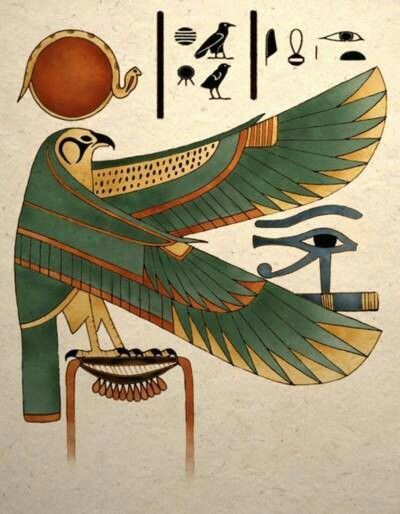
Ra shared many of his symbols with other solar deities, in particular Horus, usually depicted as a falcon. After the deities were paired with pharaohs, the children of Hathor were considered to be fathered by Ra.
- The Tree of Life
The Tree of Life is an important religious symbol to the Egyptians. The Tree of Life was located within Ra’s sun temple in Heliopolis and was considered sacred. The fruit that sprang from this tree was not available to humans, but only in aging-rituals reserved for pharaohs. The Tree of Life is also referred to as the mythical, sacred Ished tree. Eternal life came to those who ate the fruit from the Tree of Life.
- Bennu Bird or Phoenix
Another important ancient Egyptian symbol connected to Ra is the “Bennu.” The Bennu bird is Ra’s ba and a symbol of fire and rebirth. Bennu is the name of the bird that represented Ra’s soul.
This bird is a phoenix and it was seated at the Tree of Life in Ra’s Sun Temple in Heliopolis. Inside the temple, on top of an obelisk, sat the Benben Stone. This pyramid-shaped stone served as a beacon to Bennu and is also an important ancient Egyptian religious symbol. Sometimes, Ra is depicted as a phoenix, showing the connection between the two.
- Primordial Serpent and Sun Boat
Ra was thought to travel in a sun boat to protect its fires from the primordial waters of the underworld it passed through during the night.
The ancient Egyptians believed that as the sun god, Ra’s role was to sail across the heavens during the day in his boat called the “Barque of Millions of Years.” In the morning when Ra emerged from the east, his boat was named, “Madjet” which meant “becoming strong.” By the end of the day the boat was called, “Semektet” which meant “becoming weak.” At the end of the day, it was believed that Ra died (swallowed by Nut) and sailed on to the underworld, leaving the moon in his place to light up the world.
The ancient texts describe how Ra would go down with the setting sun into the underworld and then rise again the next day on the opposite side. This also symbolizes the same journey that the deceased would take right after burial.
The journey was divided into 12 hours, with each hour representing an obstacle that Ra had to complete in order to move onto the next. Each area has gods and monsters that Ra meets along the way.
Throughout his journeys and adventures, the serpent-god Apep is his greatest enemy. Apep would hide below the horizon waiting to attack Ra, and they would fight many battles. Many gods and goddesses were involved in defending Ra, including the god Seth.
Ra was reborn at dawn the very next day. Ra traveled in the sun boat with various other deities including Set and Mehen who defended against the monsters of the underworld, and Ma’at who guided the boat’s course. The monsters included Apep, an enormous serpent, or also, The Lord of Chaos, who tried to stop the sun boat’s journey every night by consuming it. In some stories, Ra, in the form of a cat named Mau, defeats the evil serpent, Apep. This is part of the reason why cats are so highly-revered in Egypt.
The Ra myth saw the sunrise as the rebirth of the sun by the goddess Nut and the sky, thus attributing the concept of rebirth and renewal to Ra and strengthening his role as a creator god.
In the Pyramid Text, Re is perpetually resurrected in the mornings in the form of a scarab beetle, Khepri, which means the Emerging One. He rides on the primordial waters, called Nun, in his sacred bark (boat) along with a number of other deities across the sky. At noon he is the falcon-headed man Harakhty, and at sunset the elder Atum, the “All Lord.” He is then swallowed by the goddess Nut, who gives birth to him each morning again as Khepri.
Therefore, the cycle continued with birth, life and death. This constant aging was suggested by some later Egyptians as the reason Ra stayed separate from the world and let Osiris or Horus rule in his place.
Often coupled with this idea is the myth in which Isis is able to trick an elderly Ra, having ruled on earth as a human pharaoh, into revealing his secret name, and thus the secret of his power. Ra subsequently lost his power, resulting in the cult of Isis and Osiris to rise in importance.
- Other Symbols
The Obelisk represents the rays of the sun and was worshiped as a home of a solar god. Other symbols include Pyramids aligned east to west, the Bull, Serpent, Heron, Lion, Cat, Ram, Hawk, Beetle, and others. His main symbol, however, is the sun disk.
Ra’s Appearance
Ra is usually shown in his human form with a falcon head crowned with a sun disc. The famous sun disc was surrounded by a sacred cobra named Uraeus. In some artistic representations of the god, he is shown as “a man with the head of a beetle” or sometimes as “a man with the head of a ram”.
Sometimes Ra is shown in animal form; most commonly, Ra is shown as a hawk, but sometimes also a beetle, lion, ram, or snake, as all of these were considered powerful animals in ancient Egypt. In iconography, Egyptians sometimes painted Ra as simply a large solar disk between two large falcon wings. Ra was incorporated into many aspects of Egyptian art, and he can be seen in paintings, sculptures, statues, and even jewelry.
Composites
As with most widely worshiped Egyptian deities, Ra’s identity was often confused with others as different regional religions were merged in an attempt to unite the country.
- Amun Re
Amun was a member of the Ogdoad, representing creation energies with Amaunet, a very early patron of Thebes. He was believed to create via breath, and thus was identified with the wind rather than the sun. As the cults of Amun and Ra became increasingly popular in Upper and Lower Egypt respectively they were combined to create Amun-Ra, a solar creator god. The name Amun-Ra is reconstructed).
It is hard to distinguish exactly when this combination happened, but references to Amun-Ra appeared in pyramid texts as early as the fifth dynasty. The most common belief is that Amun-Ra was invented as a new state deity by the (Theban) rulers of the New Kingdom to unite worshipers of Amun with the older cult of Ra around the eighteenth dynasty.
- Atum-Ra
Atum-Ra (or Ra-Atum) was another composite deity formed from two completely separate deities, however Ra shared more similarities with Atum than with Amun. Atum was more closely linked with the sun, and was also a creator god of the Ennead. Both Ra and Atum were regarded as the father of the deities and pharaohs, and were widely worshiped. In older myths, Atum was the creator of Tefnut and Shu, and he was born from ocean Nun.
- Ra-Horakhty
In later Egyptian mythology, Ra-Horakhty was more of a title or manifestation than a composite deity. It translates as “Ra (who is) Horus of the Horizons”. It was intended to link Horakhty (as a sunrise-oriented aspect of Horus) to Ra. It has been suggested that Ra-Horakhty simply refers to the sun’s journey from horizon to horizon as Ra, or that it means to show Ra as a symbolic deity of hope and rebirth.
- Khepri and Khnum
Khepri was a scarab beetle who rolled up the sun in the mornings, and was sometimes seen as the morning manifestation of Ra. Similarly, the ram-headed god Khnum was also seen as the evening manifestation of Ra. The idea of different deities (or different aspects of Ra) ruling over different times of the day was fairly common, but variable.
With Khepri and Khnum taking precedence over sunrise and sunset, Ra often was the representation of midday when the sun reached its peak at noon. Sometimes different aspects of Horus were used instead of Ra’s aspects. In Thelema’s Liber Resh vel Helios, Ra represents the rising sun, with Hathor as the midday sun and Tum as the setting sun.
- Ptah
Ra rarely was combined with Ptah; the sun “crosses” over Ptah in the underworld before Ptah is reborn, thus there would be no sun-ray when this happens. Other combinations can and do exist: The rising sun with sun ray, the noon sun with sun ray, and sitting sun with sunray. But as per the Memphite creation myth he was often said to be Ptah’s first creation, through his divine will, especially when associated with Atum or Amun.
The Legend of Ra Isis and The Snake
Although Ra was highly revered and devoutly worshiped by the ancient Egyptians, there is a story to suggest he eventually grew weak. In the Legend of Ra, Isis and the Snake, the goddess Isis knew that Ra had a secret name. This secret name possessed immense power and would allow her to perform magic spells whenever she desired to.
She knew that Ra wouldn’t willingly tell her the name so she quickly got to work. Ra had begun to age and sometimes saliva dribbled from his mouth. Isis visited with him one day. She collected the spit that dribbled down his chin and mixed it with dirt and clay. She shaped her mixture into a poisonous snake.
She set the snake in Ra’s path, and when Ra was out for a walk, the snake bit him and he immediately felt the poison rushing through his body. He was in tremendous pain and asked the other gods to help him. Isis promised to help Ra but only if he would tell her his secret name. He was resistant at first, but eventually, because of the pain he was in, Ra allowed Isis to “search through him” and in so doing, she healed him and Ra’s power was transferred over to her.
The Birth of Humans
One myth tells us that Ra first came to power during the golden age. Everything was perfect and just as it should be. The earth had not been tainted in any way. The sight of such perfection moved Ra to tears and they fell to the earth. The tears grew into humans.
At first, Ra was infatuated with watching humans interact and grow. But then he became angered with them as they ended the golden age that he had loved so much. They were cruel to each other and were ruining the earth.
He summoned the goddess Hathor and transformed her into a savage lioness. He then sent her to earth to kill every human. Hathor attacked every human she came across, killing most. But before she could eliminate all humans, Ra had a change of heart. He decided he needed to stop Hathor and did so by giving her enough beer to intoxicate her. She forgot her mission but the damage she had caused was permanent. Humans had been introduced to death and now all faced their immortality.
Quick Facts About Ra
- The ancient Egyptians worshiped Ra to such an extent above other gods that some historians have argued that ancient Egyptian religion was indeed a monotheistic one with Ra as the singular god.
- Historians believe that the pyramids might represent rays of sunlight, further connecting the pharaohs with Ra, the sun god.
- During Ra’s journey through the heavens he was accompanied by several other gods including Thoth, Horus, Hathor, Maat, Abtu, and Anet.
- Nut, goddess of the sky and heavens, is sometimes referred to as Ra’s mother, because he emerges from her and is reborn every morning.
- The morning manifestation of Ra is known as “Khepri the scarab God.”
- The evening manifestation of Ra is known as the ram-headed god, Khnum.
- The sacred cobra that encircled Ra’s crown symbolized royalty, sovereignty and divine authority.
- The right eye of Ra represented the Sun; while the left eye of Ra represented the moon.
- Ra is also closely associated with the Tree of Life myth, the Ben-Ben Stone and the Bennu Bird myths.
- Ra’s glory came to an end during the time when the Roman’s conquered Egypt in 30BC.
The Creation of Ra
Ra did not have parents. He is considered to be self-created and there are many myths that suggest how this came to be. It is said that before there was any land or recognizable landscapes, there was a body of water called Nun. The water was powerful and a shining egg arose from the darkness. Inside this egg was Ra. Sun rays landed on his body and gave him the power of sunlight. He then created all other elements of life by speaking their secret names. He spent his days traveling across the sky on a boat, where he carried prayers and blessings for the living.
At night, he would travel to the Underworld where Set and Mehen would help him defeat demons and monsters. He would leave the moon in the sky while traveling to the Underworld so that the living would still have light. It is said that he was reborn each day as the sun would rise over the horizon.
The Family of Ra
Ra had several siblings, including Apep, Thoth, Sobek and Serket.
Early in his myths Ra was said to be married to Hathor and they were the parents of Horus. Later his myths changed Hathor into Ra’s daughter. This featured prominently in the myth often called The Story of Sekhmet, in which Ra sent Hathor down to punish humanity as Sekhmet.
The Middle Kingdom saw Ra being increasingly combined and affiliated with other deities, especially Amun and Osiris.
Together with Atum, Ra was believed to have fathered Shu and Tefnut who in turn bore Geb and Nut. These in turn were the parents of Osiris, Isis, Set (also known as Seth), and Nephthys. All nine made up the Heliopolitan Ennead.
Worship of the Sun God
The New Kingdom brought new heights of worship to Ra. Many tombs in the Valley of the Kings portray depictions of Ra and his journey through the underworld. During this time, many solar temples were built.
Solar temples were built for Ra but did not contain a statue of the god. Instead, they were created to be open to the sunlight that Ra represented. The earliest known temple built in honor of Ra exists in Heliopolis meaning “City of the Sun” (now a Cairo suburb). This solar temple is known as “Benu-Phoenix” and is believed to have been erected in the exact spot where Ra emerged into creation.
In later Egyptian dynastic times, Ra was merged with the god Horus, as Re-Horakhty (and many variant spellings). When his worship reached this position of importance in the Egyptian pantheon, he was believed to command the sky, the earth, and the underworld.
His local cult began to grow from roughly the second dynasty, establishing Ra as a sun deity. By the fourth dynasty the pharaohs were seen to be Ra’s manifestations on earth. Fifth Dynasty and subsequent pharaohs were all known as “The son of Ra” and Ra became incorporated into every pharaoh’s name from then onward. His worship increased massively in the fifth dynasty, when he became a state deity and pharaohs had specially aligned pyramids, obelisks, and solar temples built in his honor.
During the Middle Kingdom, the new deity, Amun-Ra was formed. Amun was one of the gods who formed the Ogdoad (the assembly of eight gods who represented eight elements of creation).
It appears almost certain, that the Great Ennead – the nine deities of Atum, Geb, Isis, Nut, Osiris, Nephthys, Seth, Shu, and Tefnut – first appeared during the decline of Ra’s cult in the sixth dynasty, and that after introduction of the new pesedjet the cult of Ra soon saw a great resurgence until the worship of Horus gained prominence.
As the king and leader of Egypt, the pharaoh was seen as the human manifestation of Horus, so the two gods became connected. This new deity fusion was then referred to as “Ra-Horakhty” meaning Ra is Horus of the Horizon. Ra’s relationship with other gods did not stop there. As the powerful creator of mankind and the sun god, he also became associated with Atum to make “Atum-Ra.”
Afterward worship focused on the syncretistic solar deity Ra-harakhty (Ra, who is Horus of the Two Horizons). During the Amarna Period of the eighteenth dynasty, Akhenaten introduced worship of another solar deity Aten. The deified solar disc represented his preferred regional deity as he attempted to lessen the influence of the temple of Atum. He built the Wetjes Aten (Elevating the Sun-disca) temple in Annu. Blocks from this temple later were used to build walls to the medieval city of Cairo and are included in some of the city gates. The cult of the Mnevis bull, an embodiment of Ra, had its centre here and established a formal burial ground for the sacrificed bulls north of the city.
In the later myths Ra was seen to have created Sekhmet, the early lioness war goddess who becomes Hathor, the cow goddess after she has sufficiently punished mankind as an avenging Eye of Ra.
This changes the themes of much earlier myths into aspects of his and he is often said to be the father of both, and brother, to the god Osiris. Afterward nearly all forms of life supposedly were created only by Ra, who called each of them into existence by speaking their secret names and eventually humans were created from Ra’s tears and sweat, hence the Egyptians call themselves the “Cattle of Ra.”
Although not the contemporary view, E. A. Wallis Budge (1857-1934) claims that Ra was the one god of Egyptian monotheism, of which all other deities were aspects, manifestations, phases, or forms.
During the New Kingdom, the worship of Ra became more complicated and grand. The walls of tombs were dedicated to extremely detailed texts that told of Ra’s journey through the underworld. Ra was said to carry the prayers and blessings of the living with the souls of the dead on the sun boat.
The idea that Ra aged with the sun became more popular with the rise of The New Kingdom. Eventually, during the reign of Akhenaten (mid 1350s-1330s), the worship reached the level of “uncompromising monotheism”
Many acts of worship included hymns, prayers, and spells to help Ra and the sun boat overcome Apep. Though worship of Ra was widespread, his cult center was in Heliopolis in Lower Egypt. Oddly enough, this was the home of the Ennead that was believed to be headed by Atum, with whom he was merged. The Holiday of ‘The Receiving of Ra’ was celebrated on May 26 in the Gregorian calendar.
Though Ra lived on in various forms into the Greco-Roman period, his worship gradually deteriorated during the fist millennium. This decline was probably due to the weakening of the kingship under various foreign rulers. Though he continued to be a part of Egyptian theology, he was no longer a part of the peoples living faith. Devotion to Ra became more and more limited to priests of the temple.
The rise of Christianity in the Roman empire caused an end to worship of Ra by the citizens of Egypt, and as Ra’s the popularity suddenly died out, the study of Ra became purely for academic knowledge even among the Egyptian priests.
Sources:
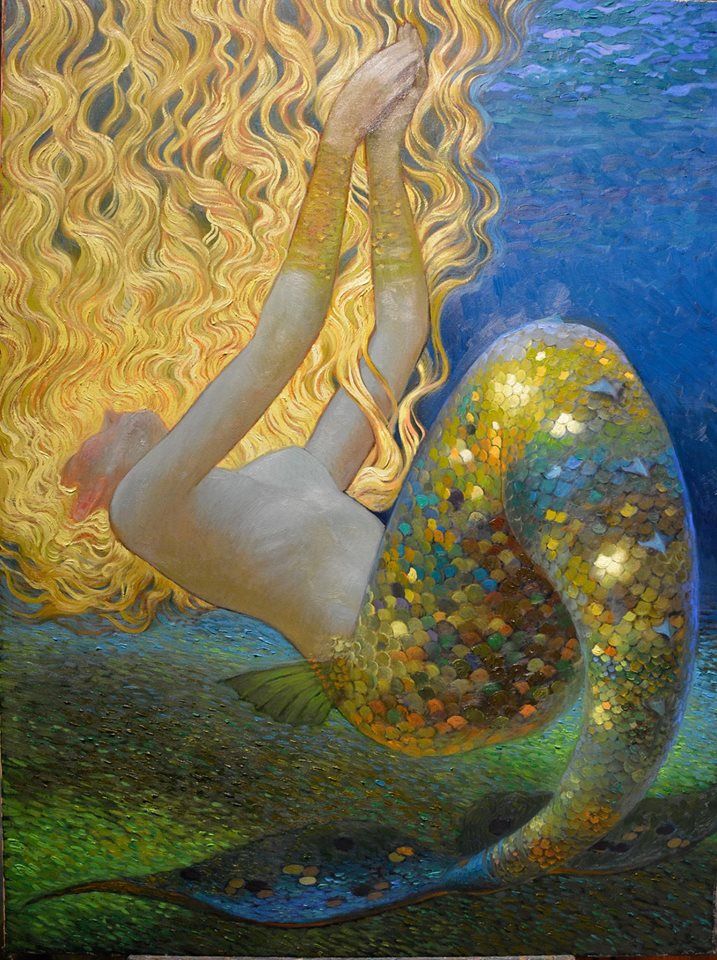
Beautiful Amberella may have legs or a mermaid’s tail. She wears an amber crown and is bedecked with amber jewelry.
Although amber is the product of trees, because it was often found tossed up by waves, it was associated with the sea. Amber is the vehicle with which to communicate with Amberella. She is a completely benevolent spirit and may be requested to assist with love (especially forbidden love), fertility, pregnancy, and relief from poverty.
An Amberella Altar
Amber is considered magickally beneficial during pregnancy. Place amber jewelry on an altar dedicated to Amberella, requesting her blessings before you wear it. Decorate her altar with sea treasures such as shells, sea glass, and small stones, as well as images of mermaids and sea creatures.
Lithuanian Myth of Amberella
The beautiful maiden Amberella lived on the shores of the sea with her fisherman father and his wife. While swimming, Amberella is drawn into a whirlpool and pulled into the depths of the sea. Amberella finds that she has been captured by the Prince of the Seas to serve as his princess.
He keeps her as his wife in a fabulous undersea palace of amber. When Amberella begs to be returned to her parents, the prince is enraged. He mounts white foaming horses, grasps his princess in his arms, and rises to the surface in a furious storm.
As the Prince of the Seas and Amberella rise from the water, her parents see her in his grasp. She is adorned with an amber crown and amber necklace. In her hands she holds lumps of amber which she tosses to her grieving parents. As the prince and Amberella sink back into the sea, they realize their daughter is lost forever.
Now, when the Prince of Seas becomes angry, the seas begins to churn and storms rage. From her prison-palace below, Amberella tosses pieces of amber onto the shores to show her parents how much she misses and loves them.
Source: The Encyclopedia of Spirits
- Also known as: Agatho Daemon
The Romans and Hellenistic Greeks did not like deities in the shapes of animals. They liked their spirits to resemble humans. Adopted Egyptian spirits thus adapted in form.
Agathos may be Agatho Daemon in human form; he may be an emanation of Agatho Daemon who developed into an independent spiritual entity; or he may always have been a distinct spirit.
Agathos is Lord of Vineyards and watches over fields of grain, peace, prosperity, and plenty. He bestows wisdom, good health, and good luck. Agathos was venerated at home, traditionally by a family together.
The worship of the Agatho Daimon was and is mostly a private practice. Greek families poured out a few drops of wine to him after every meal. Small offerings were sometimes left out to the daimon, which appeared as a snake around the household.
To honor the spirit, pour out libations to him, speak to him on a regular basis, asking for protection for yourself and your home. You might also make a sculpture of a snake to serve as a visual reminder of your daimon.
He shows his favor via a family’s good fortune (or lack thereof). Agathos guarantees that a family has sufficient food and drink.
- Favored people: Barkeeps, those who own vineyards or grow artisanal grain.
- Manifestations: Agathos manifests as a snake or a handsome young man.
- Attributes: Goblet, ear of wheat, poppies, cornucopia, staff or wand entwined by a snake.
- Offerings: Toast Agathos with a glass of wine at each meal; if you’re not drinking, then just set one aside for him.
The second day of every Athenian month was also a sacred day, devoted to the Agathos Daimon (good spirit). The name “daimon” does not mean the evil demon of modern Christianity, (although it did have a negative form, called the kakodaimon), but was thought to be an aspect of Zeus, as Zeus Ktesios, Charitodotes, and Epikarpios, titles as giver of increase and joy.
Agathos Daimon is most often represented in the form of a snake, a symbol of healing. However the daimon is also a function of one’s being, a characteristic inherently neither good nor bad. Hence, one prays for a good daimon, an eudaimon, and goodness from the gods for the coming month and also for the favor of father Zeus as Agathos Daimon.
Pindar, Socrates, Proclus and Plotinus mention their daemons as well. The spirit acts as a guardian against error and a guide in life.
Burkert (Greek Religion, p. 181) says that “One must be on good terms with it.” And Pindar sang that “The daimon active about me I will always consciously put to rights with me by cultivating him according to my means” (Pyth. 3.108f) and “The great mind of Zeus steers the daimon of the men whom he loves” (Pyth. 5.122f). The philosopher Sokratēs talks of his own daimon as a small voice which speaks to him and warns him to refrain from certain actions (Plato, Apology, 31d).
The myth of the Agatho Daemon can neither be proved nor disproved. “Agatho” stems from the Greek “to agathon,” meaning the highest or supreme good in a moral sense, summum bonum. Since the daemon brought both spiritual and material wealth to a household or person, the Agatho Daemon amounts to the “good spirit.”
Each person was assigned a daemon at birth, and the “good spirit” of the daemon protected and guided him through life. Sacrifices of milk and honey were made to the daemon on one’s birthday. Otherwise a cup of consecrated or spiritually pure wine was passed around at dinner, called the cup of the Agatho Daemon. As we shall see, these rituals were meant as an affirmation of life (and thus as an acknowledgement of death).
The Agatho Daemon was the “good” half of a good and evil duality. This duality was portrayed in frescoes as a serpent with the head of a lion with 7 or 12 solar rays emanating from it. The serpent portion was called the kakodaemon, representing the underworld and water, and the lion’s head was the Agatho Daemon, representing the solar fires.
The cosmic interpretation of the daemon as solar provider was tied to the household’s prosperity in the form of the genius. The lion-headed serpent was frequently pictured along with the household genius, the latter shown as a youth holding a horn of plenty and a bowl, or a poppy and ears of corn, representing the growth and abundance of harvest. The harvest imagery along with the serpent as rain and sun were all symbolic of a successful harvest.
Information about the Egyptian version of this deity, known as Agathodaemon, can be found here: Agathodaemon.
Information collected from various sources
- Other names: Damballah Weddo, Da, Papa Damballa, Obatala
- Manifestation: Damballah is a huge snake, so big his body forms seven thousand coils
- Color: White
- Day: Thursday
- Plants: Bougainvillea, trees in general, but especially the silk cotton tree (Bombax ceiba) and the Royal palm.
- Altar: Keep shallow vessels of clean, fresh water for him to curl up inside.
- Holiday: March 17 (St. Patrick’s Day)
Once upon a time, there was only Damballah. He lay beneath Earth, a great snake, cushioning and protecting it from falling into the watery abyss below. Although he lay still for a long time, eventually he had to move. His movements raised mountains and created valleys. Stars were shaken up into the sky. Sacred waters were released, forming oceans, rivers, springs and streams.
The first rain began to fall, and Aido-Hwedo, in the guise of the first rainbow, appeared. Damballah and Aido-Hwedo fell in love. They remain in love today. The intensive all pervasive power of that love infiltrated the entire universe. That power is manifest in human beings in the form of white liquids: milk and semen.
Associated Catholic Saint Patrick (who drove the snakes out of Ireland), and sometimes also Moses, whose staff transformed into a snake to prove the power of God over that wielded by Egyptian priests, Damballah is the primordial snake Iwa of life, wealth and wisdom. He is venerated in Dahomey as well as Haitian Vodou. He may also survive in the New Orleans folk saint Blanc Dani.
Damballah is among the most beloved and important Iwa. He associated with creation and is viewed as a loving father to the world. His presence brings peace and harmony. He bestows wealth, prosperity, good health, and fertility to devotees and can expose the location of missing treasure.
Damballah and his true love, the rainbow serpent, maintain the balance of forces, which sustains all ife on Earth. As a source of life, he is also strongly associated with water and regulates moisture and the rain.
He is incredibly old and powerful and is usually not bothered for trivial matters. He can be extremely generous, however, and so may be approached when one is genuinely desperate or really in trouble. Despite his venerable age, he remains interested in people. He will engage in sacred marriages with women but also occasionally with men.
Dambullah appears in dreams. He does not communicate well. You must pay attention. He is so old and primal that he is pre-articulate; he emerges from a time before speech. Damballah may hiss or make whistling noises but does not speak human language.
When he possesses a human, he does not speak but instead only hisses and whistles. His movements are also snake-like, and can including slithering along the ground, flicking his tongue, and climbing tall objects.
He is a stickler for cleanliness. He doesn’t like strong, pervasive odors of any kind, but especially tobacco. If you smoke, then do so far from his altar space or anywhere associated with him. He may object to cleaning products with strong odors too, as well as air fresheners with strong aromas. Rooms should smell clean and fresh. Open a window to aerate them. He does not object to light floral odors, like rose or orange blossom water, and traditionally expresses a fondness for Pompeii Lotion, a cologne product found in botanicas and spiritual supply stores.
Offerings:
For a very traditional offering, make a bed or hill of white flour on a perfectly clean, pure white plate. Nestle one whole, raw white egg into the center of the flour and serve.
Other offerings could include white candles and white foods like rice, milk, whole raw eggs (leave them plain or rub gently with rose or other mildly scented, fine quality floral water), corn syrup, white chickens, or white flowers. More lavish offerings might include luxurious white fabrics, crystal or porcelain eggs and/or snakes.
Veve for Damballa and Ayida-Weddo:
From; Encyclopedia of Spirits
In ancient Roman mythology, Salacia was the female divinity of the sea, worshiped as the goddess of salt water who presided over the depths of the ocean. She was the wife and queen of Neptune, god of the sea and water.
You can petition Salacia for safety on the sea, prosperity, abundance, and true love. She has powers of healing and fertility and access to all the treasures of the sea.
Her story is as follows:
The god Neptune wanted to marry Salacia, but she was in great awe of her distinguished suitor, and to preserve her virginity, with grace and celerity she managed to glide out of his sight, and hid from him in the Atlantic Ocean. The grieving Neptune sent a dolphin to look for her and persuade the fair nymph to come back and share his throne. Salacia agreed to marry Neptune and the King of the Deep was so overjoyed at these good tidings that the dolphin was awarded a place in the heavens, where he now forms a well known constellation Delphinus.
Salacia is represented as a beautiful nymph, crowned with seaweed, either enthroned beside Neptune or driving with him in a pearl shell chariot drawn by dolphins, sea-horses (hippocamps) or other fabulous creatures of the deep, and attended by Tritons and Nereids. She is dressed in queenly robes and has nets in her hair.
Salacia was the personification of the calm and sunlit aspect of the sea. Derived from Latin sal, meaning “salt”, the name Salacia denotes the wide, open sea, and is sometimes literally translated to mean sensational.
As his wife, Salacia bore Neptune three children, the most celebrated being Triton, whose body was half man and half fish.
Other names and titles:
Salacia Neptuni which means “effervescence of Neptune”.She was sometimes invoked by Roman priests as “maia Volcani, Salacia Neptuni, hora Quirini, nerio Martis.” As Salachia, she is also sometimes known as the goddess of springs, ruling over the springs of highly mineralized waters. She is identified with the Greek goddess, Amphitrite, wife of Poseidon who shares a similar mythology.
From: Wikipedia and other sources
Note: This post was put together by Shirley Twofeathers, you may repost and share it only if you give me credit and a link back to this website. Blessed be.
- Title: Lord of Beginnings
- Also known as: Giano, Dianus
- Origin: Roman
- Feast Day: January 9th, The Agonalia
- Tree: Oak
- Number: 1
- Time: Month of January
Janus is the two-faced spirit, but in the most positive sense of that term. Janus literally has two faces, indicating his power to see from all directions and perspectives. He sees the past and future simultaneously. Janus is a guardian and protector.
Janus is among the most ancient and significant deities of the Roman pantheon. He was in the Roman region long before the Romans arrived. Before the arrival of Jupiter, he may have been the preeminent male spirit. Officially superseded by Jupiter within the context of the Roman pantheon, Janus retained his right to be first.
Similar to modern traditions involving Eshu Elegbara, Janus is the first spirit invoked before any invocations, sacrifices, or offerings made to other Roman Deities. Jupiter then follows as “king,” followed by whomever else might be invoked.
The Roman Temple of Janus had double doors, known as the Gates of War. The temple was a visible symbol of peace or war. When there was peace throughout Rome, the doors of his temple were shut. This was a rare occurence.
In 153 BCE, the Romans changed their calendar, moving the New Year from the spring equinox to January 1st, one of the feast days of Janus, Spirit of Beginnings. With one face, Janus looks back on the old year; with the other he looks forward to the new. Roman New Year’s rituals incorporating the feast of Janus lasted for six days of joyous, raucous celebrating. Festivities included drinking, feasting, and decorating homes and buildings with holly, mistletoe, and lights.
- Invoke Janus when you wish to begin anew, when you need to make a fresh start.
- Invoke him before beginning new projects, ventures, and relationships.
- Invoke him to understand the past.
Favored People: Diviners; he seems to like pretty women, too.
Iconography: Janus has two faces: one looking forward, the other back. Sometimes one face is young; the other old.
Consort: His original consort seems to have been Jana (Diana), but he was eventually paired with Juturna.
Sacred site: The Janiculum Hill in Western Rome, center of his veneration.
Offerings: His traditional Roman offering was whole grain farro wheat mixed with salt, also Ianual, a type of focaccia (flat, oven-baked Italian bread) made with flour, eggs, oil, and cheese served during rituals thanking Janus for providing a bountiful harvest.
Source: Encyclopedia of Spirits
